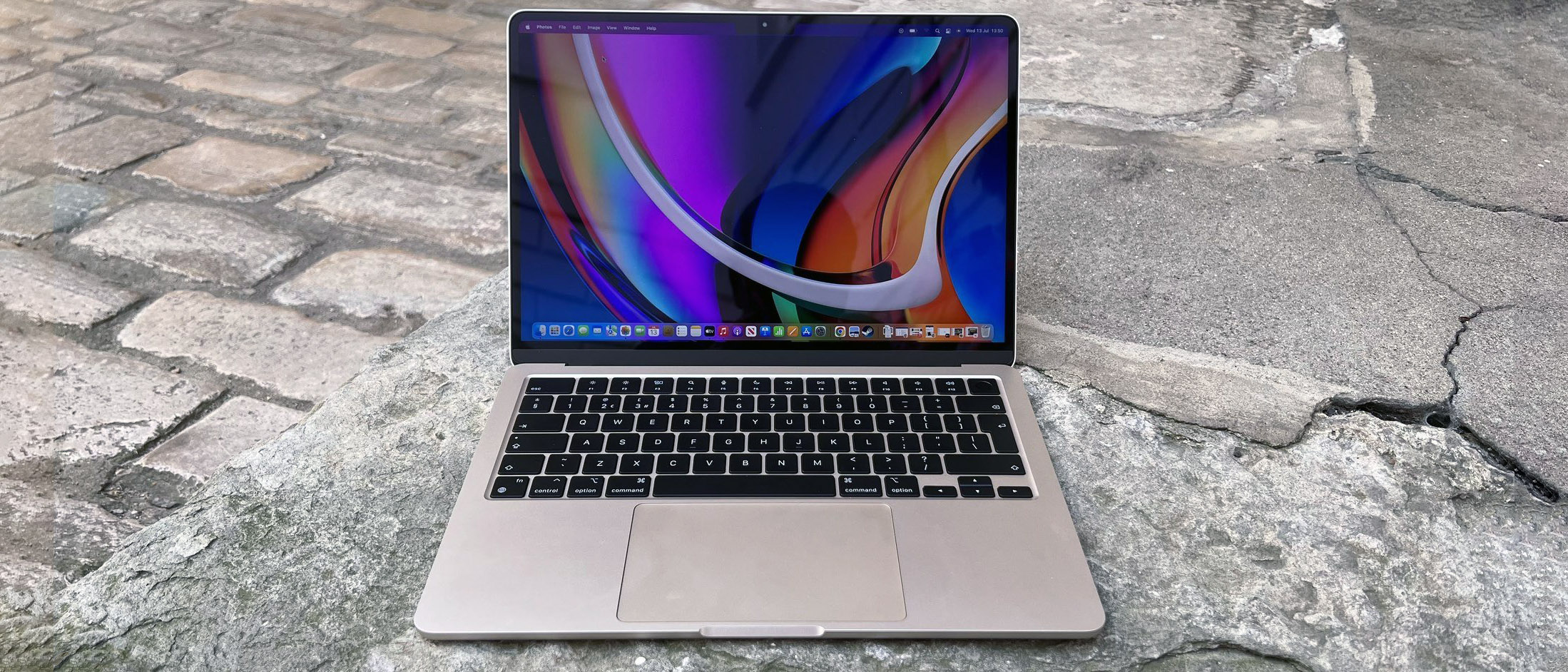iMore Verdict
With its M2 chipset and all-new design, the new MacBook Air (2022) is the best MacBook that most people should currently buy.
Pros
- +
Powerful M2 chip performance
- +
Smart new industrial design decisions
- +
Excellent build quality and software
Cons
- -
Price hike over M1 MacBook Air
- -
Some right-hand side ports would have been appreciated
- -
Not as striking as wedge-style design
You can always trust iMore.
The new 2022 MacBook Air was the star of the show at this summer's WWDC, landing with the biggest redesign the portable laptop line up had seen since it was first shown to the world way back in 2008.
The MacBook Air has always sported a revolutionary design. It's perhaps one of Steve Jobs's greatest moments of showmanship, when he first pulled the original MacBook Air out from a slimline manilla envelope on stage at Macworld. But it's been roughly 15 years since that first unveiling, and in the world of tech, that's basically a lifetime. From the introduction of tablets to Google's rivalling Chromebooks, the world of computing now looks dramatically different.
So the new MacBook Air redesign is a significant one – and an important one, if Apple is to see the line retain its position as the world's best selling laptop. The 2022 MacBook Air comes out with something to prove then, and it comes out swinging — not only does it offer an all-new (yet still-ultraportable) design, but it also comes packing in the brand-new generation of Apple silicon too, in the shape of the M2 chipset.
Is it enough to see Apple's entry-level MacBook retain its position as the world's best-selling laptop? And does it rank among the best MacBooks you can buy today? Read on to find out.
This is a review of the 2022 M2 MacBook Air, which now starts at $999 following the reveal of the M3 MacBook Air. The M3 Air is available from Friday, March 8 2024, starting at $1,099.
- Not sure which MacBook is for you? Check out our in-depth MacBook Pro vs MacBook Air guide
MacBook Air (M2, 2022): Price and availability
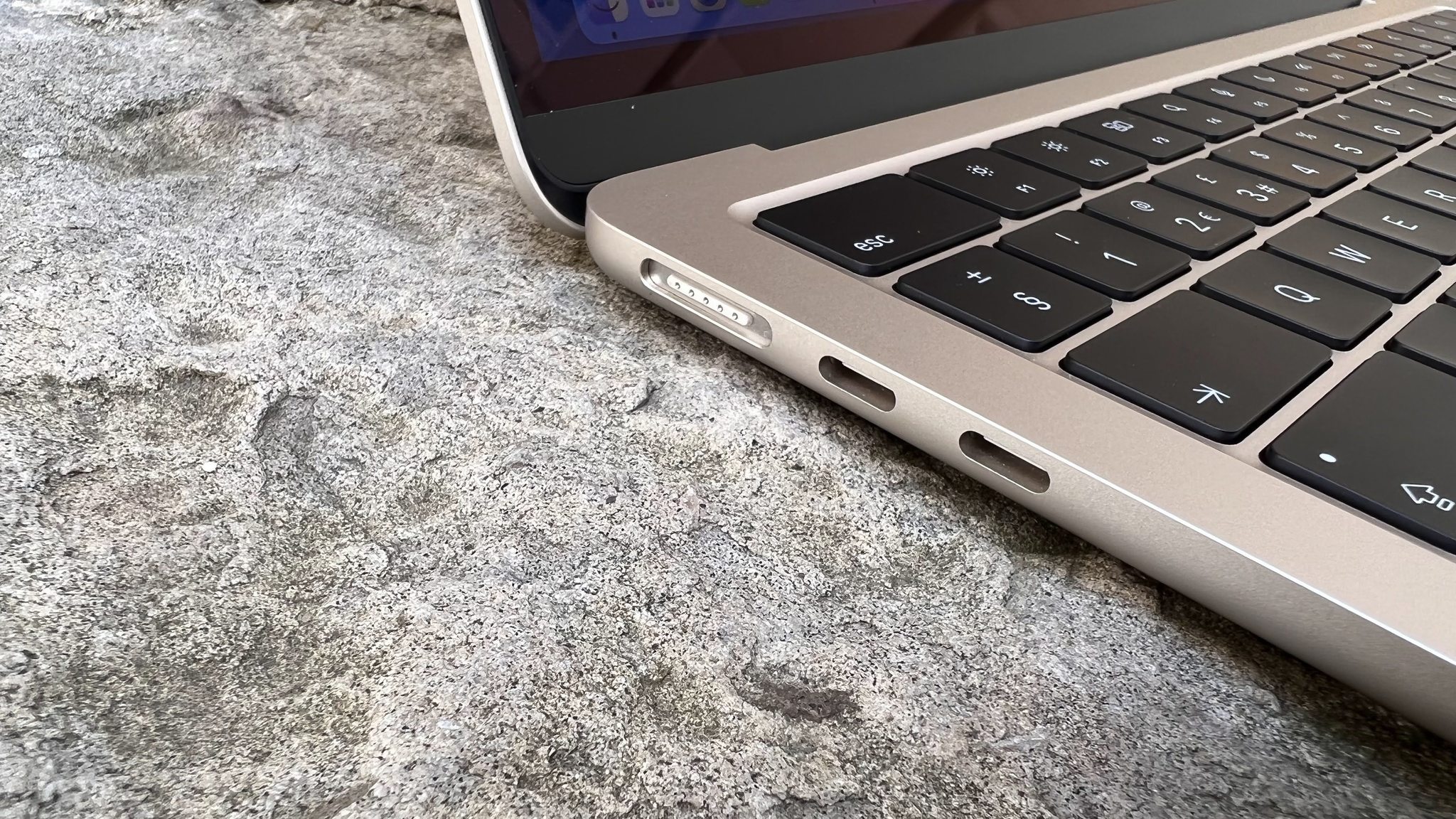
The 2022 MacBook Air with M2 chip is available to order now, with a shipping and release date set for July 15, 2022.
With an all-new design comes some pricing changes for the MacBook Air. The M2 MacBook Air now starts at $1,199 / £1,249 for the base spec with 8GB of RAM, 256GB of SSD storage, and an 8-core CPU / 8-core GPU chipset. It's a $200 / £250 bump over its predecessor. That rises to $1,499 / £1,549 for the step-up model which includes a 512GB SSD, 8GB of RAM, and an 8-core CPU / 10-core GPU chipset, as well as a dual-port 35W USB-C charger. The base model has only a single-port 30W charger.
You can max out the spec list by adding up to 24GB of RAM, as large as a 2TB SSD, and an optional 67W USB-C fast charger, which pushes the price up to $2,499 / £2,549.
The model iMore has been supplied with for this review has the 8-core CPU / 10-core GPU M2 configuration, with a 1TB SSD and 16GB of RAM, which runs up a price tag of $1,899 / $1,949. Keep that in mind when cross-referencing our performance findings against whichever configuration you may eventually opt to purchase. And remember, once you've settled on a configuration, you'll have little means of upgrading it in the future — there's no easy way to open up a MacBook Air, and many components are soldered into place — so consider that when thinking about the lifespan of your new machine.
The MacBook Air (2022) has a price hike but it's justified with the chip's power and the design's functionality.
As we'll discuss, lots about the new MacBook Air (2022) justifies that price hike, from its chip's power to the excellent functionality of its design. But it does take it over that psychological $999 / £999 price point that made the M1 MacBook Air such a great-value, impulsive purchase. They're still on sale via Amazon and other third-party retailers, and can now be found more regularly at discounted prices, too. The M1 MacBook Air remains a great machine, and should not be overlooked if your budget is tight.
From our experience, we'd also recommend the new MacBook Air over the 2022 13-inch MacBook Pro, too. Both offer similar performance, but the M2 Air wins out thanks to its slightly cheaper price point and improved ergonomics and portability, which we'll discuss in depth below.
MacBook Air (M2, 2022): Hardware and design
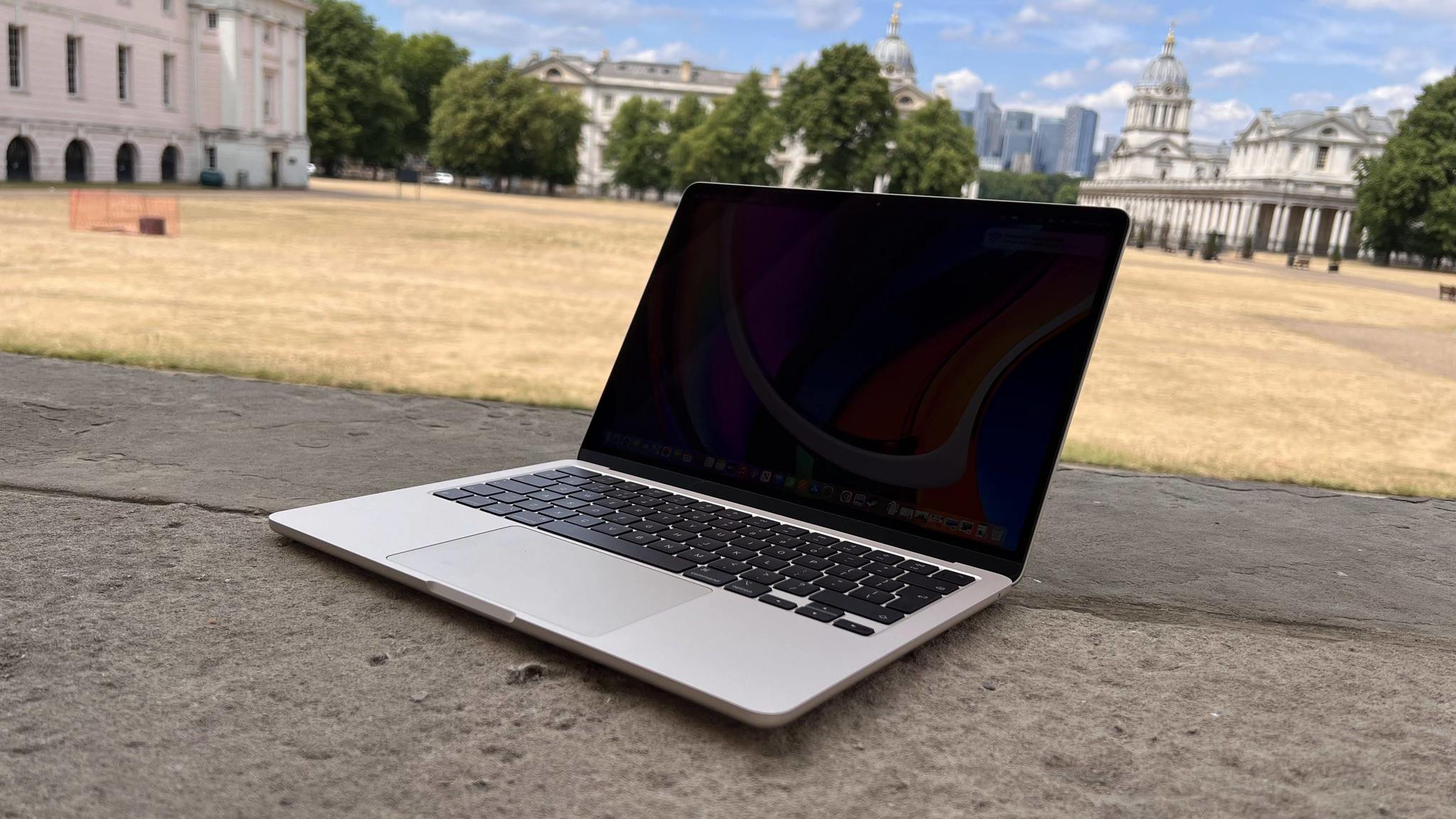
If this year's 13-inch MacBook Pro felt like a bit of a yawn when it came to recycling the previous generations' industrial design, the new MacBook Air for 2022 is a breath of… well… fresh air. The M2 MacBook Air is a stunning machine, not just in terms of how it looks, but also in how its features come together to be functionally more useful and comfortable as a whole.
First, colors. You've got the classic silver and Space Gray shades that adorn many an Apple laptop, but they're now also joined by Starlight and Midnight colors. Midnight is a dark blue so deep it's almost black, while Starlight is a soft golden shade with an almost iridescent quality to it. We're particularly taken by the Midnight color, a throwback to the 2006 black MacBook, and as close to a straight-up black laptop that Apple is ever likely to make these days.
The most notable change in terms of design is the new uniformity of the MacBook Air's shell shape. Gone is the tapered wedge of the previous MacBook Air design, with the M2 version instead measuring the same thickness across its entire profile. You're looking at measurements of 1.13cm x 30.41cm x 21.5cm (H x W x D) for the 2022 model compared to 0.41–1.61cm x 30.41cm x 21.24cm for the M1 Air. Though the dimensions are close, Apple measures that out as a 20% reduction in overall volume by keeping that uniform height across the device, with it weighing 2.7 lbs. (1.24kg) now compared to the previous 2.8 lbs. (1.29kg).
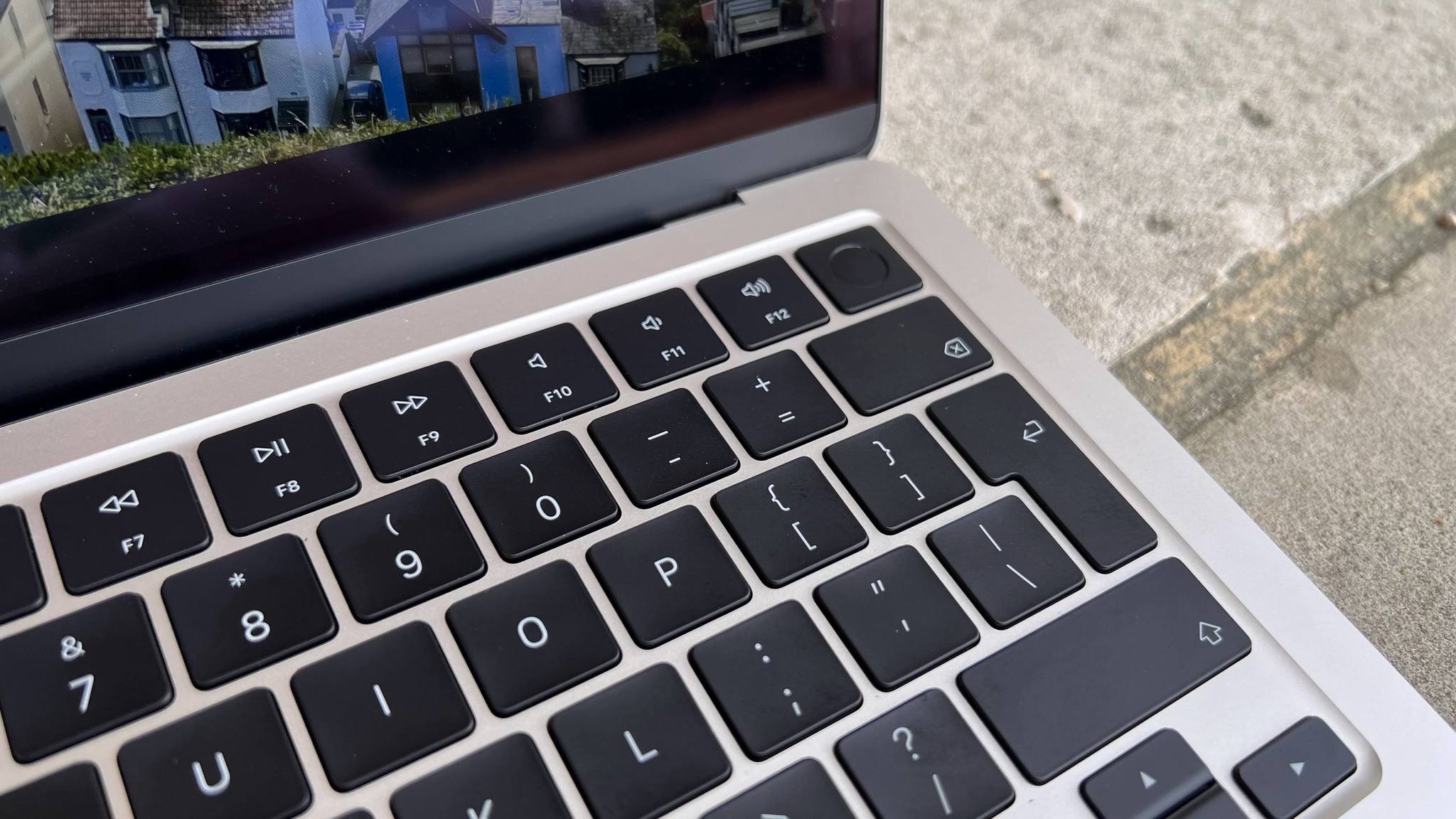
In real terms, you're left with a device that is still remarkably portable for the power it pushes — easily balanced on the palm of your hand, and near unnoticeable in terms of weight in a rucksack. In my experience, it seems to rest more steadily on a surface too, with four rubberized feet on its underside preventing it from sliding around, and better balanced when seated on your lap. Even with one of the best cases for MacBook Air with M2, there isn't much heft here.
Apple's Magic Keyboard laptop keys are far improved compared to the years when the company opted for butterfly key designs in its portable computers, and the M2 MacBook Air continues in that fine fashion. There is good clicky travel to each key, with the array well spaced out and backlit for comfort in darker ambient lighting. This entire review was written on the MacBook Air, and it was a breeze to sit at for many long hours, even given the machine's diminutive size. New for the 2022 MacBook Air is a row of full-size function keys above the number row, making them far easier to access and identify. That includes a chunky Esc key on the left, and a power / Touch ID fingerprint scanner on the top right, now in a much larger size to accommodate a larger span of your fingertips. It's much preferred.
Ports, situated on the left edge of the 2022 MacBook Air, get an upgrade too. Well, sorta… Technically, there are still only two Thunderbolt / USB-C ports on the Air, and it's still only going to power one external monitor up to a 6K / 60Hz resolution standard, as well as accessories and/or external storage drives.
In real terms, you're left with a device that is still remarkably portable for the power it pushes
However, we've now got the much-loved, much-missed MagSafe charging connection making a return, with braided color-matched cables in tow, too. It magnetically snaps onto the charging connection on the side of the M2 MacBook Air and falls away harmlessly should the cable get yanked, with a color-coded LED to indicate charging status (the USB-C ports can still be used for fast-charging too). So, if you're sitting charging your new MacBook Air while using its ports, you've now got one extra port freed up for accessories, whereas the M1 Air would have needed that USB-C connection for juicing up the battery. A small win (I'd still love an Air with Thunderbolt ports on both sides), but we'll take it. On the right side, you'll also find a 3.5mm jack for high-impedance headphones — great if you've got a pair of wired hi-res headphones you're fond of, meaning you're not reliant on wireless Bluetooth earbuds like Apple's own AirPods Pro.
An unquestionable improvement is the Liquid Retina display. It's now 0.3 inches larger at 13.6 inches on the diagonal, at a 2560 x 1664 resolution (224ppi, a fraction less pixel-dense than the M1 Air's screen, but invisible to the naked eye), and 25% brighter than the previous generation at 500 nits compared to the M1 MacBook Air's 400 nits. It adopts the upper notch design, hiding the webcam and as seen on the 14- and-16-inch MacBook Pro models, helps to achieve greater real estate. Some consider it an eyesore, but honestly, I forget it's even there, and if that's the trade-off for more screen without a bigger overall device, it's one I'm happy to take. It's a wonderfully vibrant display (it meets the P3 wide color gamut standard), and though its 500 nits display isn't a match for what the larger Pro models can reach in terms of brightness, you should still be able to use it outside in broad daylight without too much discomfort.
It makes for a good movie-watching device too, thanks to its new four-speaker array, completely hidden between the keyboard and display. While the Spatial Audio support doesn't even approach true surround sound, the speakers get surprisingly loud and deliver crisp, punchy audio with good stereo separation.
Ultimately, from an ergonomic and useability standpoint, this is the better machine — but I won't hold it against anyone who may still carry the torch for the classic design.
Likewise, the FaceTime webcam is a huge improvement. Whereas even this year's 13-inch MacBook Pro is stuck with a lowly 720p camera, the M2 MacBook Air camera jumps to a 1080p resolution. Making a video call side-by-side with its recipient, I could see just how much of a clarity jump that represents. In a world where video calling is now so vital to both our social and professional lives, it's a welcome — and necessary — improvement.
It's worth remembering too that the MacBook Air remains a fanless design. Heat is dissipated from the internals across passive heatsinks and is done incredibly effectively. I'm based in the UK, which is experiencing an unprecedented heat wave at the time of writing — I was dreading the thought of this thing cooking my legs while the world around me burned — but rarely did the 2022 MacBook Air become any more than just a little warm. It took extreme benchmarks before things started to get toasty. And, being fanless, it's completely silent in action. It speaks to the continued efficiency of Apple's silicon, which runs faster and remains cooler than it has any right to.
But we really should pour one out for the outgoing original MacBook Air design, too. I've had some heated discussions about this with my iMore colleagues, and though the new Air is wonderful to use thanks to its new design, I have to admit there's a little magic gone in the new machine. There was a genuine "wow" factor to the razor-edge taper of the old-look MacBook Air, which this new design can't replicate. Ultimately, from an ergonomic and useability standpoint, this is the better machine — but I won't hold it against anyone who may still carry the torch for the classic design.
MacBook Air (M2, 2022): Software and performance
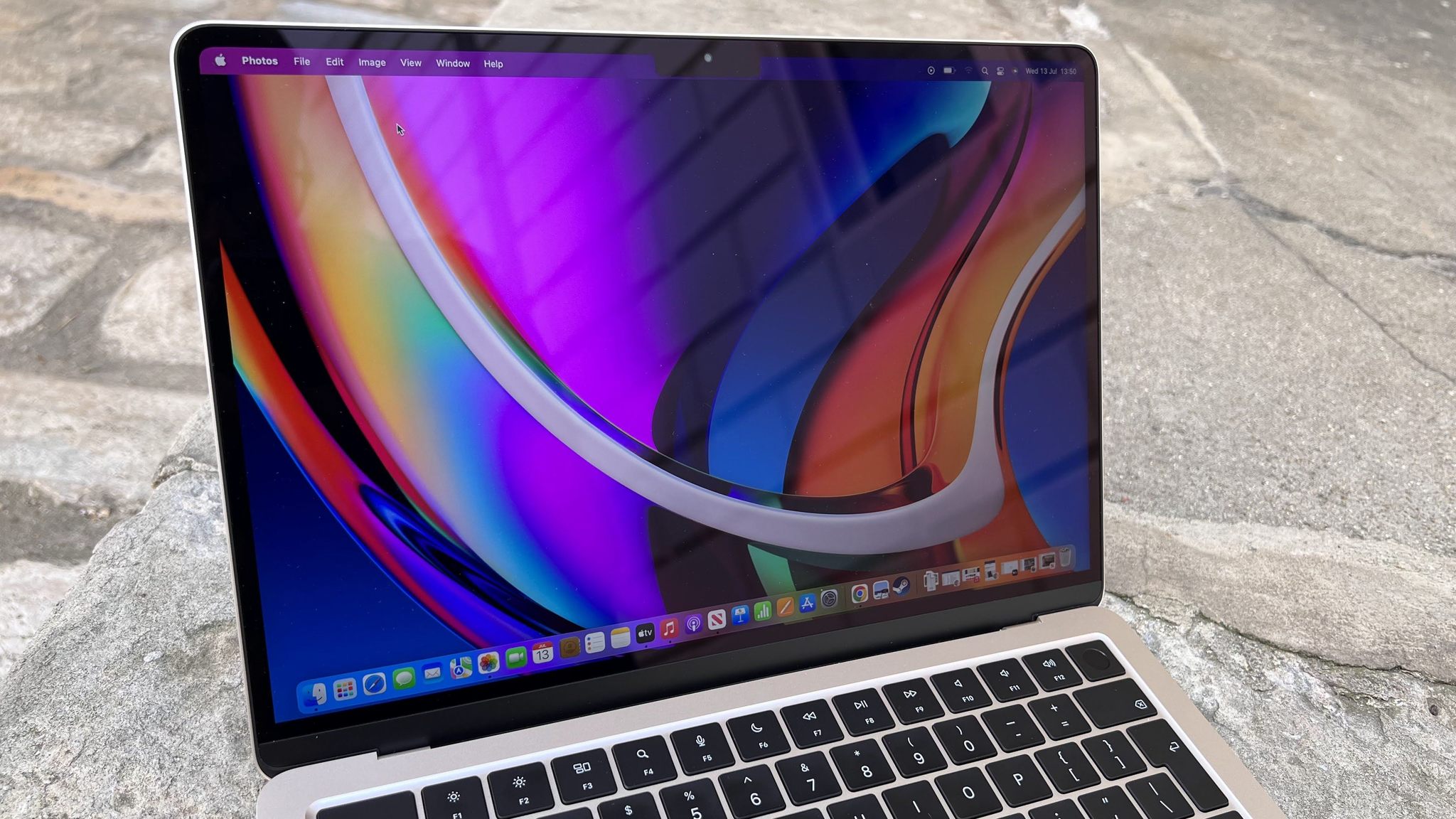
We were blown away by the performance of the Apple M2 chip when it debuted in the 13-inch MacBook Pro (2022), and that performance, powered by a 5nm process, continues to impress in the 2022 MacBook Air.
As mentioned, there are two configurations of the M2 chip available to potential owners of the new MacBook Air. The entry-level model offers an 8-core CPU with four performance cores and four efficiency cores, alongside an 8-core GPU and 16-core Neural Engine. The upgrade option bumps the GPU to a 10-core setup — two more cores than the M1 could offer — and that's what we'll be testing here. Both support up to 24GB of RAM and each offers 50% more bandwidth, maxing out at a potential 100GB/s.
Apple is quoting an 18% increase in multi-threaded performance and as much as a 35% graphics performance increase on the 10-core GPU. The Neural Engine (discreetly used for offline dictation, real-time video and photo editing, and other computationally tricky jobs), is also said to be 40% faster for AI-driven tasks — although quantifying its performance in a day-to-day environment is difficult.
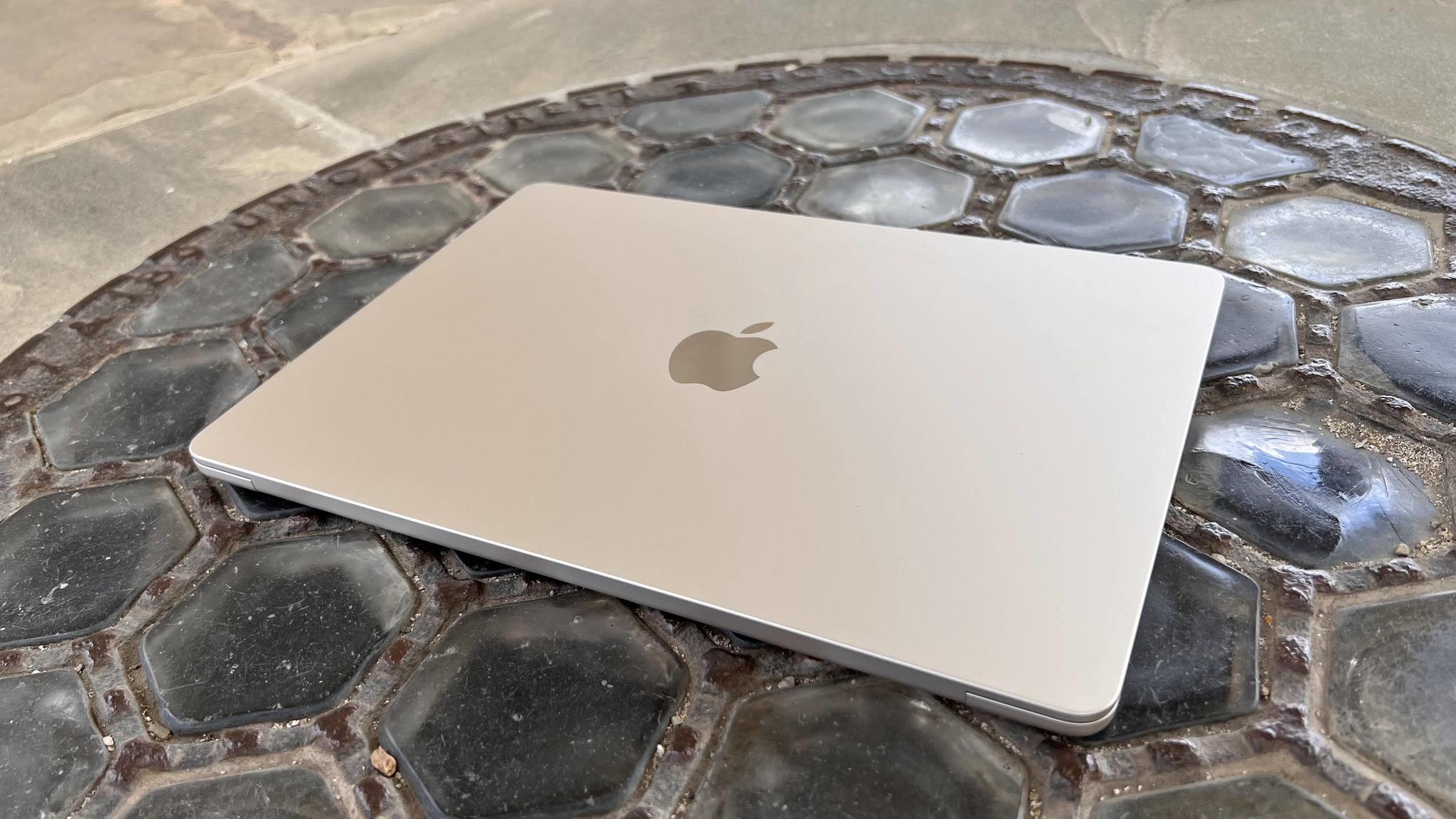
What's key to the success of Apple's chip, especially in a passively-cooled enclosure like the MacBook Air, is that it's able to compute quickly and powerfully without an excessive power draw, helping to keep everything running cooler for longer.
According to Apple, this will result in 1.2x faster Photoshop performance for applying filters and effects when compared against an M1 MacBook Air, and 5x better performance in such tasks against a dual-core Intel Core i5 MacBook Air. Video editing with Final Cut Pro is 1.4x faster on the M2 against the M1 by Apple's estimations, and 15x faster than that Intel MacBook Air, while ProRes encoding and decoding are estimated at 3x faster against the M1 Air, and 24x faster than the Intel-based MacBook Air.
Against the 2020 MacBook Air with M1, that's a gain of close to 12% in single-core performance and a jump of almost 19% in multi-core performance. That's a magnificent achievement.
Those numbers bear out against our synthetic benchmarking scores, with the MacBook Air M2 appearing more or less equally matched against the 13-inch MacBook Pro with M2 that we tested earlier in the year.
Across the average of three Geekbench benchmarking runs, we saw the M2 MacBook Air hit a 1917 single-core performance score, and 8950 for the multi-core performance run. That's In line with the M2 MacBook Pro's 1920 / 8869 respective single and multi-core results. Against the 2020 MacBook Air with M1, that's a gain of close to 12% in single-core performance and a jump of almost 19% in multi-core performance. That's a magnificent achievement.
| Device | CPU | Single Core | Multicore |
|---|---|---|---|
| MacBook Air (mid 2022) | M2 (8-core CPU / 10-core GPU) | 1917 | 8950 |
| MacBook Pro 13-inch (2022) | M2 | 1,920 | 8,869 |
| MacBook Pro 13-inch (late 2020) | M1 | 1,705 | 7,382 |
| MacBook Air (late 2020) | M1 | 1,702 | 7,400 |
| Dell XPS 17 9700 | i7-10875H | 1,282 | 8,119 |
| Dell XPS 15 9500 | i7-10875H | 1,318 | 7,621 |
| Razer Blade Pro 17 | i7-10750H | 1,314 | 6,164 |
| ASUS ROG Zephyrus G14 | Ryzen 4900HS | 1,221 | 7,982 |
| Surface Book 3 | i71065G7 | 1,298 | 4,511 |
| Dell XPS 13 9300 | i7-1065G7 | 1,284 | 4,848 |
Moving onto the GFXBench Metal test for 3D graphics performance, the standard 1440p test was no match for the M2, registering an average of 110fps (just like the M2 MacBook Pro), while upping the ante to 4K — beyond the device's native resolution — yielded a respectable 48fps.
It means that should you want to do some gaming on the 2022 MacBook Air, it'll more than oblige, providing you're not trying to push the big AAA games at their most advanced graphical settings. Our go-to Mac gaming benchmark, the Tomb Raider reboot, returned an average of 27fps at a resolution of 2560 x 1600, with settings set to the top "Ultimate" scale, which is respectable given this is not designed as a gaming machine. It's here though that the Air's passive cooling felt most tested — the machine did start to get hot with Tomb Raider, and successive tests saw the average fps count drop to closer to the 21fps mark, revealing some throttling in action when the Air's heat management was put under strain. Keep your expectations in check and there's fun to be had, especially with the more casually-minded Apple Arcade titles — just don't expect to be running the Resident Evil Village port, announced at WWDC 2022, at its highest fidelity options when it lands later this year.
This is the perfect machine, then, for the average on-the-go user. If your daily workflow consists of browser tabs, spreadsheets, documents, and entertainment apps, you're going to have headroom to spare with the M2 chip, and that's exactly the sort of user that Apple positions the Air for. More intense tasks, like prolonged video editing or extreme 3D graphics management, will start to stress the temperatures the chip can handle without active cooling, but in my time with the new MacBook Air, this only proved a problem with the Tomb Raider stress test. Apple's Rosetta emulation layer, bridging the gap between Mac apps designed for Intel-based chips and Apple silicon, is all but seamless in its execution now too. I didn't encounter any apps using Rosetta that presented any notable issues during testing.
Again, do remember though that our test unit had the meatier GPU spec and a generous helping of RAM not found in the base model — 8GB of memory is starting to sound a little creaky by modern standards. But that a machine can be this thin and powerful, without a fan keeping things in check, is remarkable.
...that a machine can be this thin and this powerful, without a fan keeping things in check, is remarkable.
One element we were unable to test, however, was the storage performance of the MacBook Air with a 256GB SSD configuration. This is noteworthy as its speeds raised eyebrows in the 2022 13-inch MacBook Pro. We were able to corroborate that its storage performance took a dip against the M1 version of that machine due to the use of a single 256GB NAND flash chip, preventing the beneficial parallel speeds two 128GB chips would offer. Anecdotally, you should expect the same from the 256GB M2 MacBook Air, though it may be less of a concern given what you'd expect to be a lower-intensity workflow for the machine's intended audience. We'll await further testing in that respect. By contrast, our 1TB model performed in line with speedy expectations against the Blackmagic Disk Speed Test benchmarking tool, with write speeds punching above the 3000MB/s mark and read speeds exceeding 2770MB/s.
MacBook Air (M2, 2022): Battery
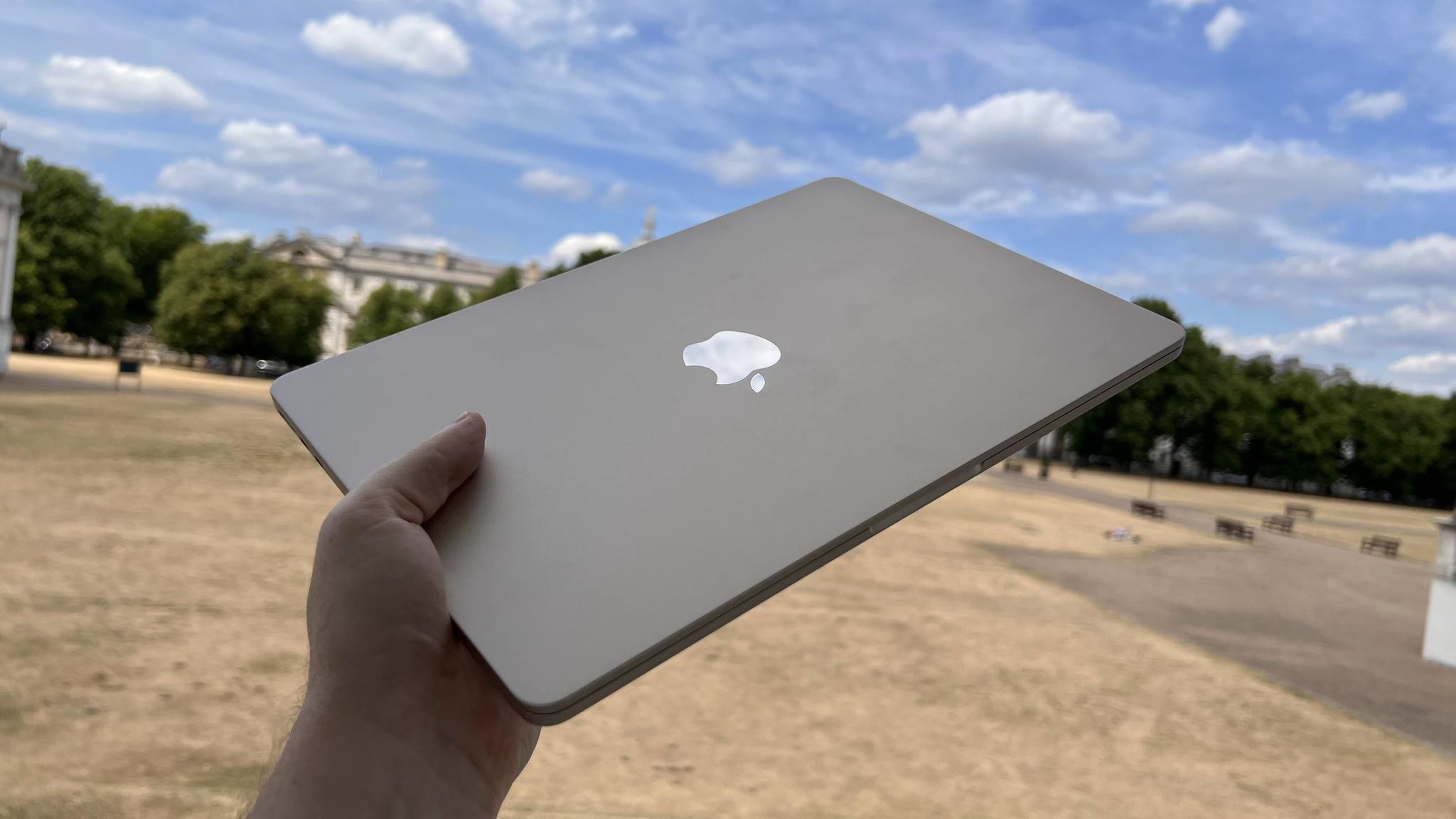
The battery life on a laptop with a portable design like this, just begging to be taken out into the wild away from charging sockets, is a key factor. Apple squeezed frankly astonishing battery life out of this year's entry-level M2 MacBook Pro, to the point where draining its battery life proved a genuine challenge during testing. And while the 2022 MacBook Air doesn't hit the heady heights of its M2 MacBook Pro compatriot, it still boasts excellent unplugged stamina from its battery.
Apple is setting expectations for the 2022 MacBook Air to be 15 hours of wireless web use, and 18 hours of Apple TV app video playback. In each case, that's with the screen brightness set to the halfway mark, and the disclaimer that different configurations (its battery tests are against the base-level MacBook Air) and usage will lead to differing results.
What's undeniably impressive though is that this remains broadly in line with the battery performance we saw from the MacBook Air running off the M1 chipset.
Those estimates are broadly fair from our time with the machine. Keeping in mind that iMore was sent a 10-core GPU configuration with increased RAM and storage and that the working environment necessitated a brighter screen setting, in everyday terms, we were still seeing battery life only running low nearer the 12-hour mark. Activating the low power option from the Battery settings menu when necessary, as well as a less varied workload than we subjected the MacBook Air to, would likely see Apple's claim ring true. But as ever, with battery spans, expect your mileage to vary depending on how hard you're going to be hammering the machine.
What's undeniably impressive though is that this remains broadly in line with the battery performance we saw from the MacBook Air running off the M1 chipset. That's despite the significant processing and speed gains that the M2 brings to the table. You're getting more power without having to worry about a drop in battery life, showing just how efficient Apple's silicon is evolving to be.
MacBook Air (M2, 2022): Competition
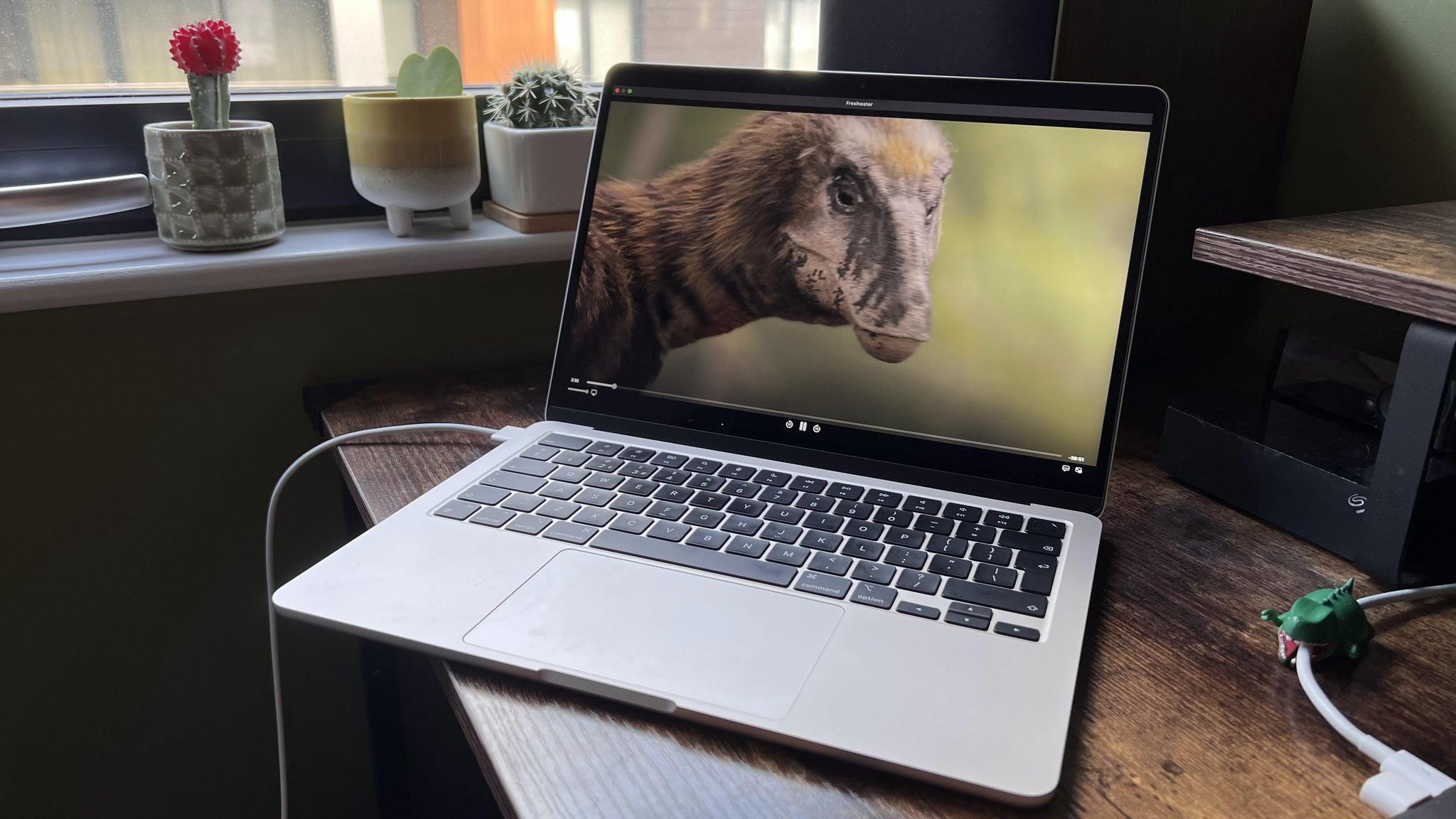
Those looking at a MacBook Air in 2022 are likely weighing up the balance between portability, price, and everyday performance, as well as the allure of the overall Apple ecosystem. That essentially narrows down your alternative options to three choices: the M1 MacBook Air, the 13-inch MacBook Pro with M2 (2022), and the 12.9-inch iPad Pro with M1.
The M1 MacBook Air is the obvious point of comparison. Its design remains luscious even with this new successor rolling into town, and the performance of the M1 chip still impresses. You won't get MagSafe, the extra screen real estate, the improved FaceTime camera, or full-size function keys, but you will make a financial saving by opting for the older model.
The 13-inch MacBook Pro for 2022 is in an odd place with the arrival of the M2 MacBook Air. Its exterior design is showing its age, it's pricier than the base M2 MacBook Air, and both feature the same chipset. The 13-inch Pro doesn't benefit from the addition of MagSafe either, or the improved camera. It did have better sustained 3D performance thanks to its internal fans providing active cooling, though that may not be a concern for the average potential Air owner, anyway.
The performance of the M1 chip still impresses.
An M1 iPad Pro is a wildcard in the bunch here. Kitting out a Wi-Fi model with 256GB storage and a keyboard case will bring the cost in line with that of the new MacBook Air, for instance, and that M1 chip is powerfully implemented in Apple's tablet too. iPadOS and macOS are vastly different operating system experiences, however, which will be a potential blocker for some workflows. But you can now quite easily get a day's work done on an iPad — all the major apps are there, with the power to boot, plus you have the added option of standard tablet functionality to go with it. With both upcoming versions of iPadOS and macOS (Ventura) introducing Apple's new Stage Manager multi-tasking feature, the gap between using macOS and iPadOS is going to shrink further. An iPad Pro should therefore be a genuine consideration.
If you're not averse to jumping over to the Windows side of the computing world, Dell's XPS 13 is a capable option when configured to a similar price point as the 2022 MacBook Air. It also features touchscreen capabilities and a design that lets it mimic the form of a tablet if that sort of versatility appeals to you.
MacBook Air (M2, 2022): Should you buy it?

Buy the MacBook Air (M2, 2022) if…
You crave portability.
Small, lightweight, and powerful, the new MacBook Air makes mincemeat of day-to-day tasks, making it the perfect portable machine for the average user.
You've missed full-size function keys and MagSafe.
The 2022 MacBook Air is full of smart additions, whether that's returning favorites like full-size function keys and MagSafe charging, or the larger, brighter screen and bolder speaker setup.
You want Apple's latest and greatest chip.
The M2 chipset inside the 2022 MacBook Air is no joke — with Apple's second generation of homegrown silicon, it's already seeing significant performance gains and efficiency boosts.
Don't buy the MacBook Air (M2, 2022) if…
You're a sucker for that classic wedge look.
The old MacBook Air was beautiful. The new MacBook Air is also beautiful. There are pros and cons to both industrial designs, but we won't hold it against you if pine for that classic wedge-style Air look, still available with the M1 model.
You're on a very tight budget.
Despite being Apple's entry-level line, the M2 MacBook Air sees the range take on a significant price hike. It's worth the expense, but the M1 MacBook Air, still on sale, remains an excellent machine at an easier-to-attain price point.
You're looking for intensive, sustained 3D performance.
The M2 MacBook Air can certainly deliver some impressive 3D work, but it's a workload at the extreme end of its capabilities. Our gaming benchmark saw the laptop's passive cooling measures put to the test, and performance dropped off when things started to heat up.
MacBook Air (M2, 2022): Verdict
The M1 MacBook Air felt like a confident step into the future for Apple's most portable computer, and the 2022 M2 MacBook Air feels like a fitting leap forward. If you need portable power, a great keyboard, and a beautiful and sturdily designed laptop, the new MacBook Air ticks practically every box. The only situation where it may not fit the bill would be for those hoping to work with sustained 3D graphics workloads, as this can push the Air's heat management system to its limit. Those looking to fulfill that workload should look to the MacBook Pro range. But for everyone else, the 2022 MacBook Air is the first MacBook they should be considering above all others.
Marrying attractive, fresh design ideas with a powerful new generation of Apple silicon results in just about the best lightweight laptop you could hope to buy today. It's comfortable to use, lightweight to carry, ergonomic to type on and with a beautiful screen to look at, whatever your stance on the notch may be. Battery life is solid — if not quite reaching the astonishing heights of this year's 13-inch MacBook Pro, which had simply incredible stamina — but more than enough to get through an average work day off the grid with juice to spare. The 1080p FaceTime camera is a vast and welcome improvement over its predecessor, and the return of the MagSafe charging connection is just the icing on the cake.
Yes, it's more expensive than the previous model, and considerably so, given that this is the entry-level family in Apple's MacBook lineup, but the improvements and additions here justify the expense. And, if money is understandably tight during these hard economic times, Apple has at least kept the more affordable "old-school" M1 MacBook Air on sale.
This feels like the real start of the M2 chipset generation, hardware worthy of the leaps Apple silicon is quickly making. We can't wait to see what the next wave of 14-inch and 16-inch MacBook Pros, powered by whatever souped-up M2 iteration Apple conjures, has in store next.
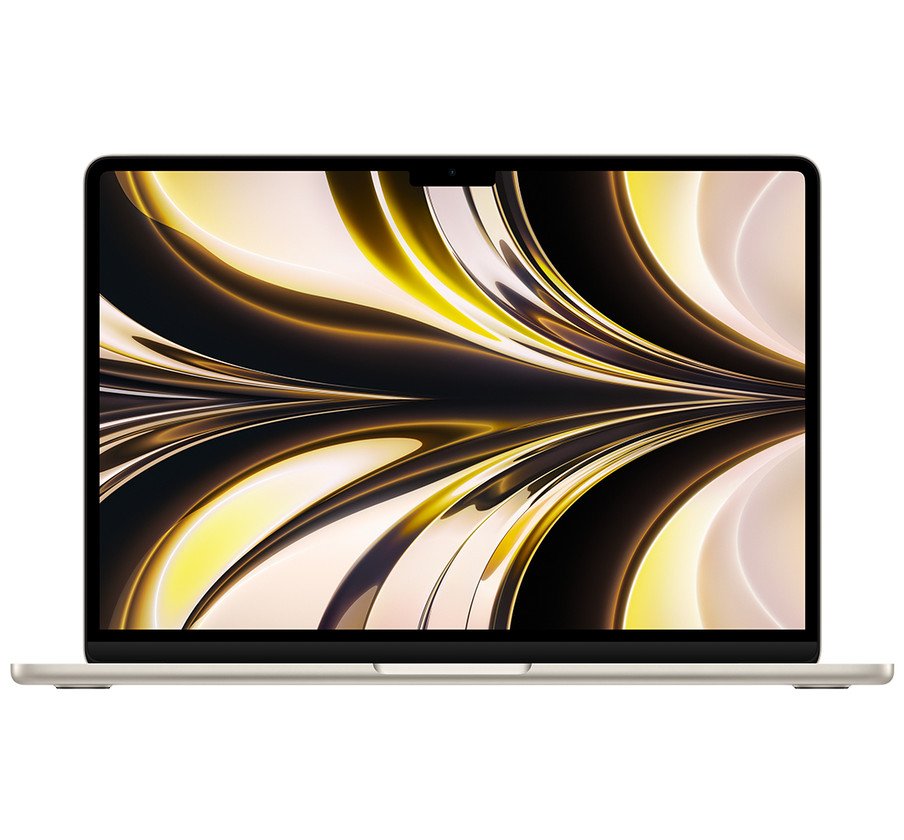
Bottom line: The new MacBook Air is a perfect super-portable laptop for almost anyone on the market craving on-the-go computing power.
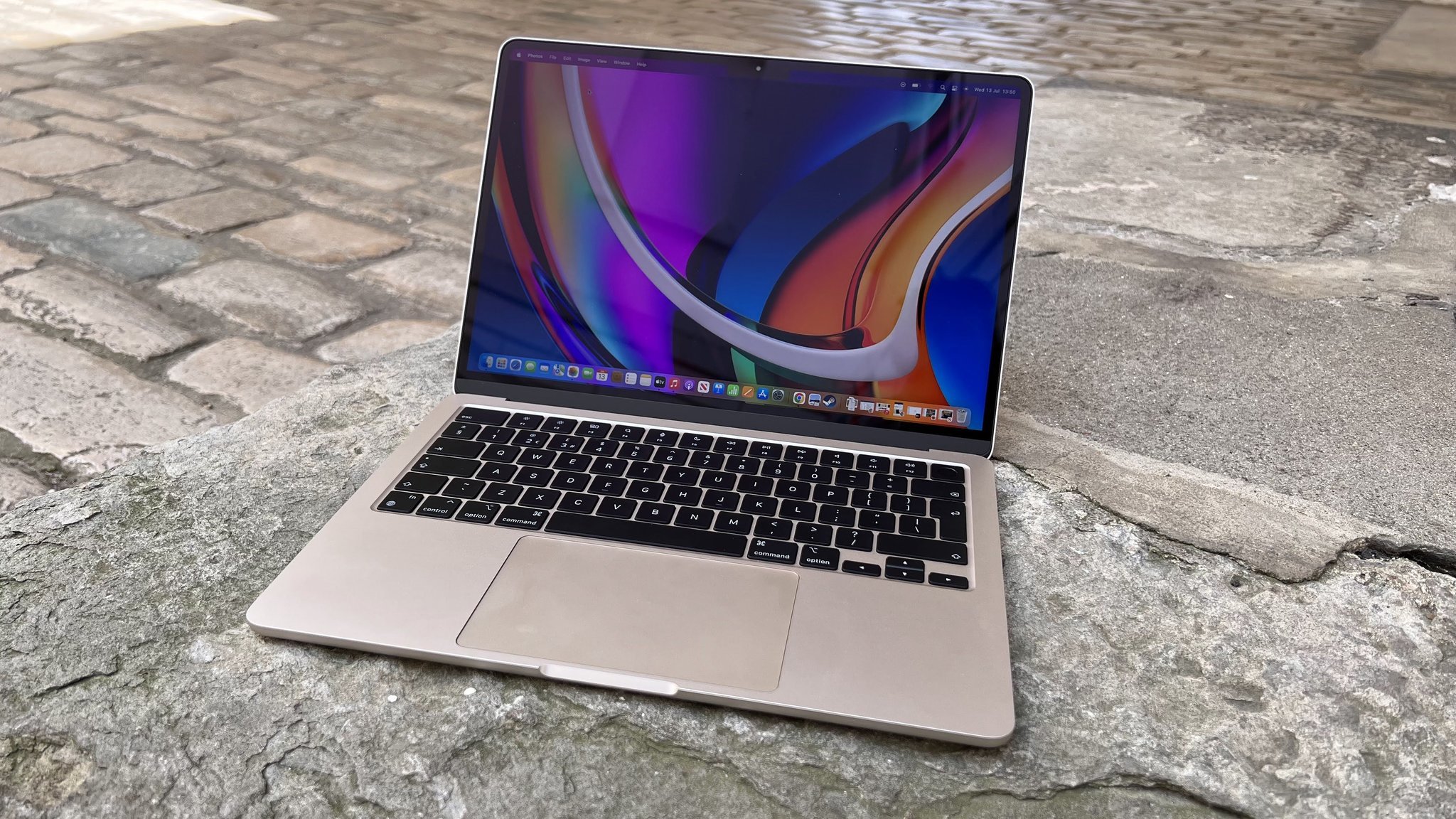

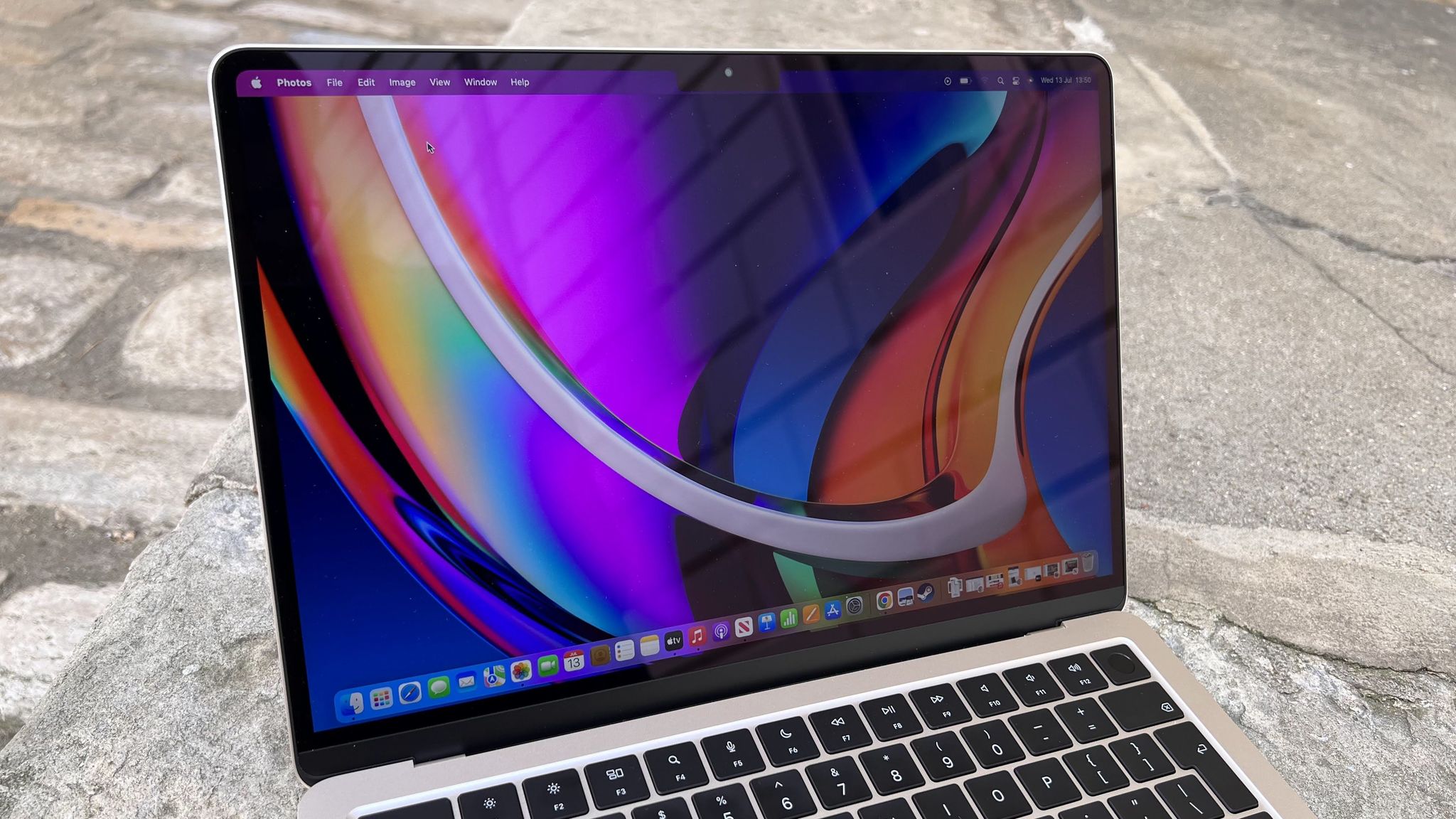
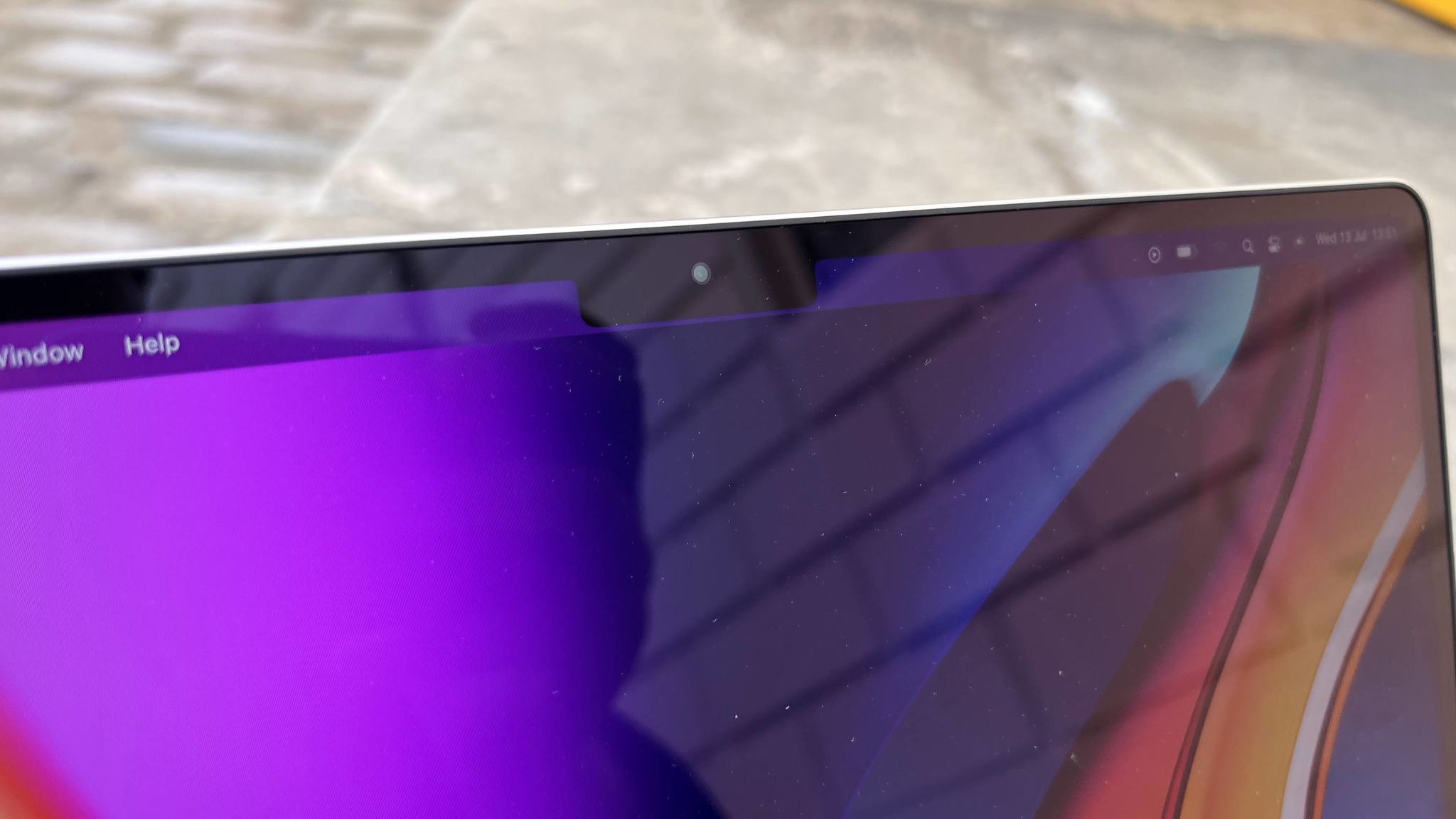
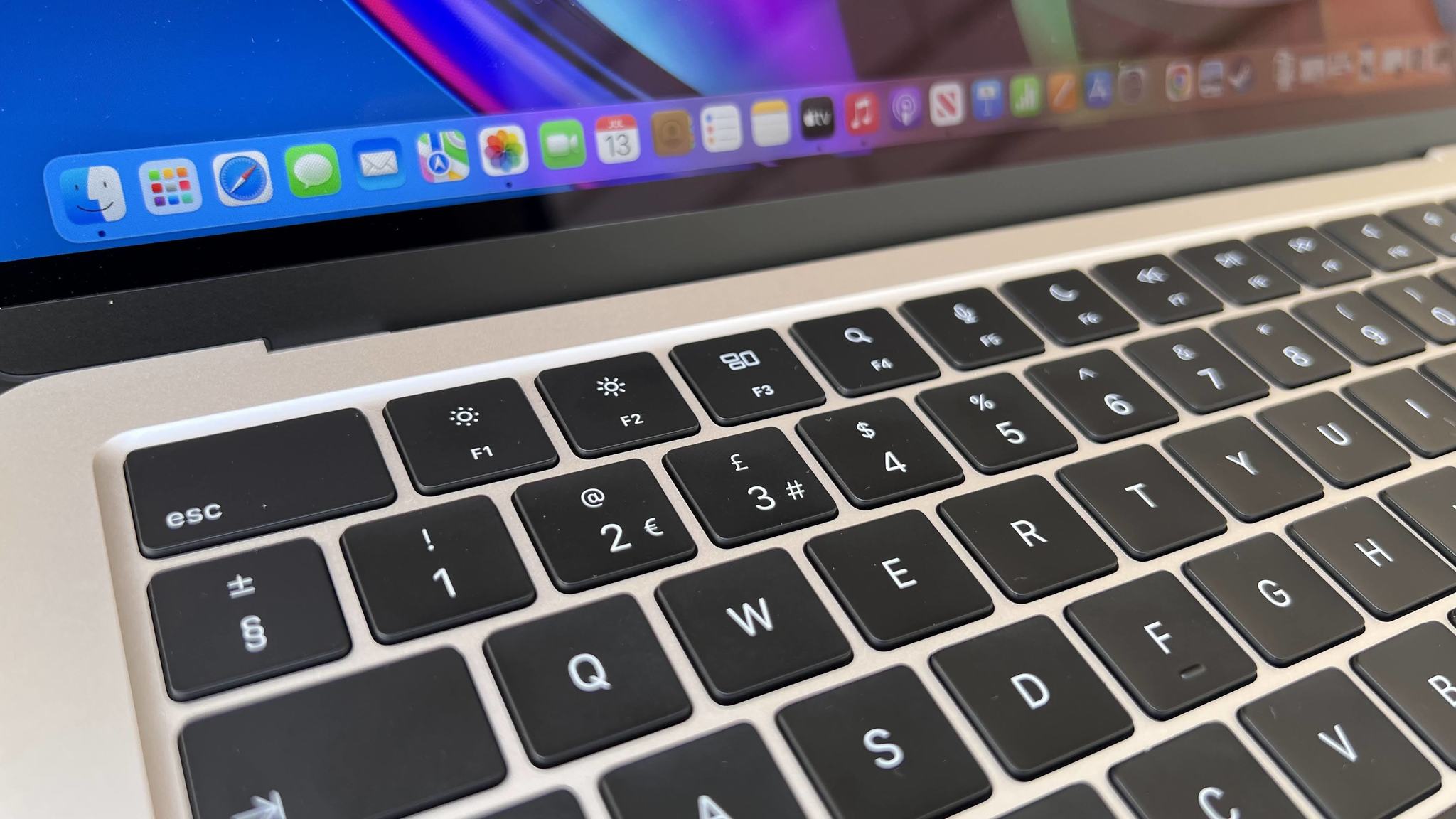

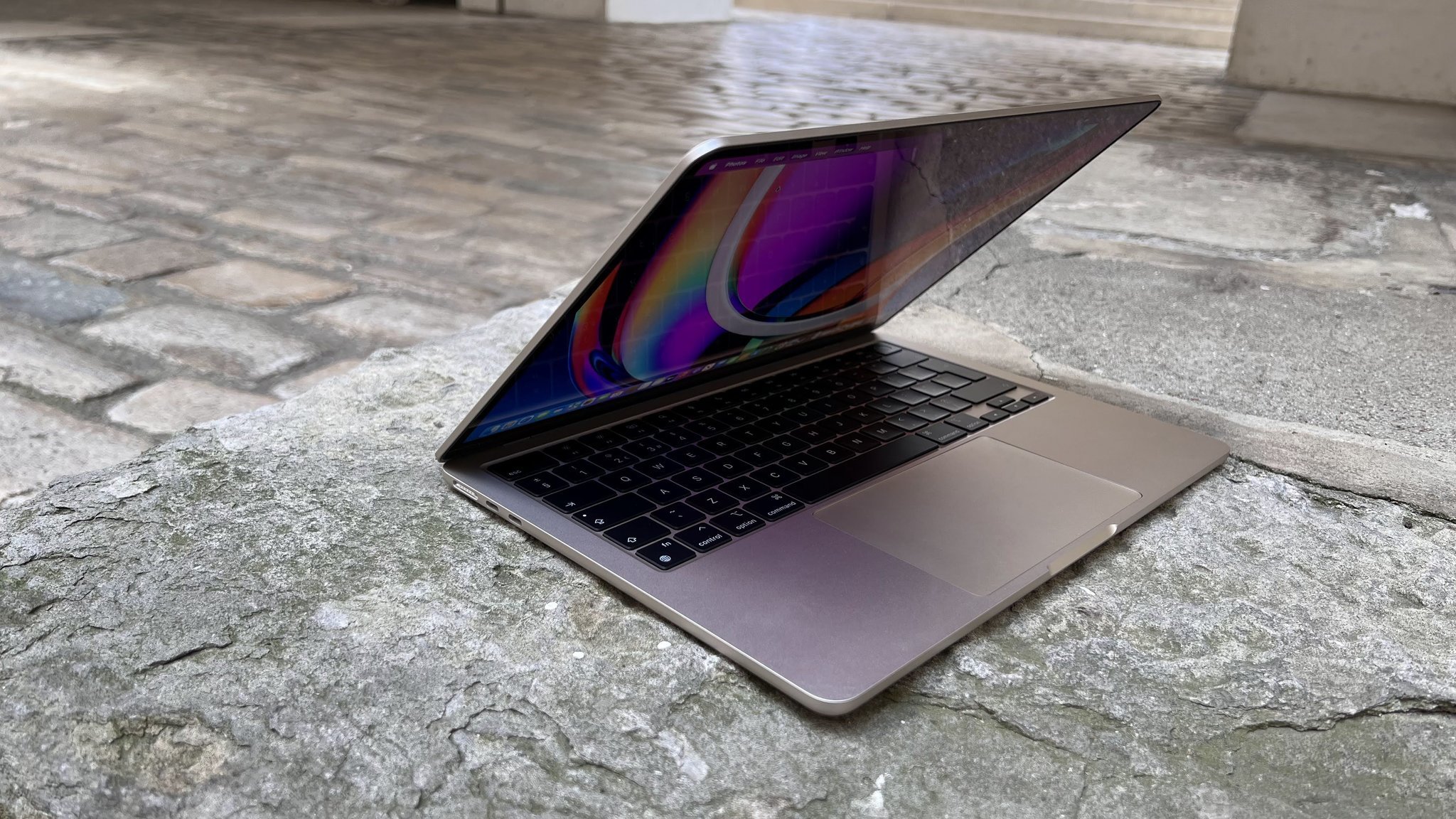

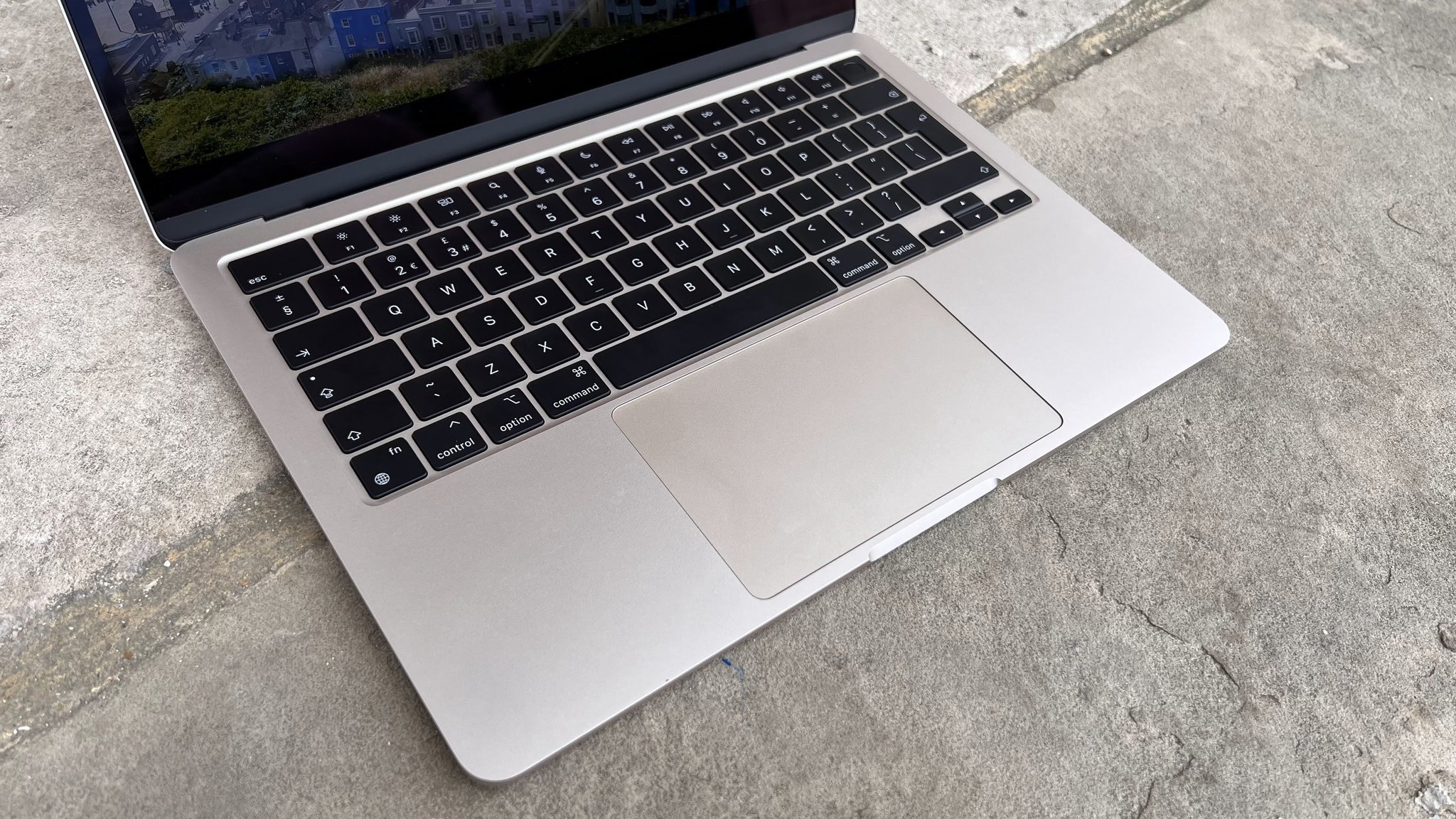
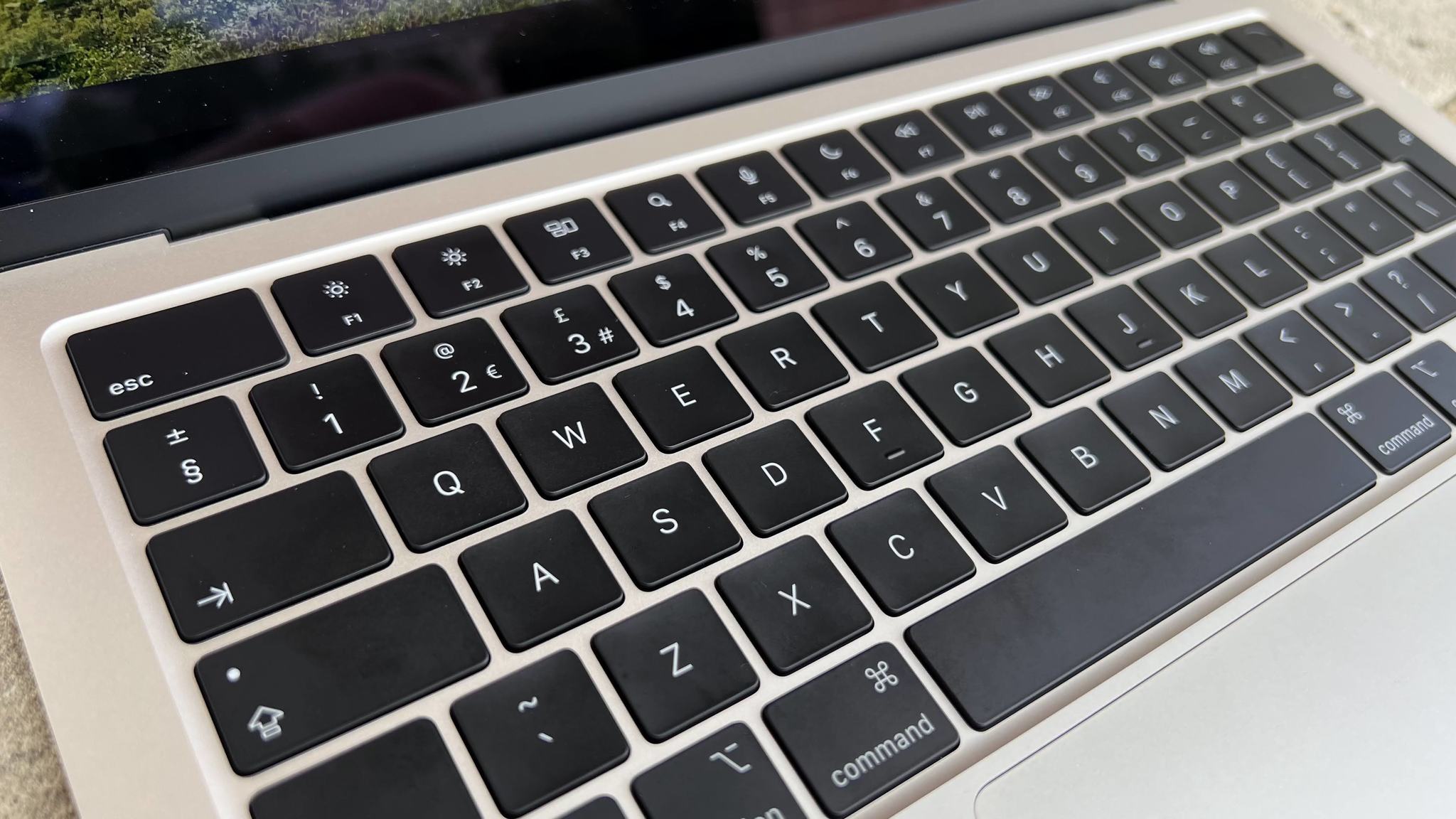

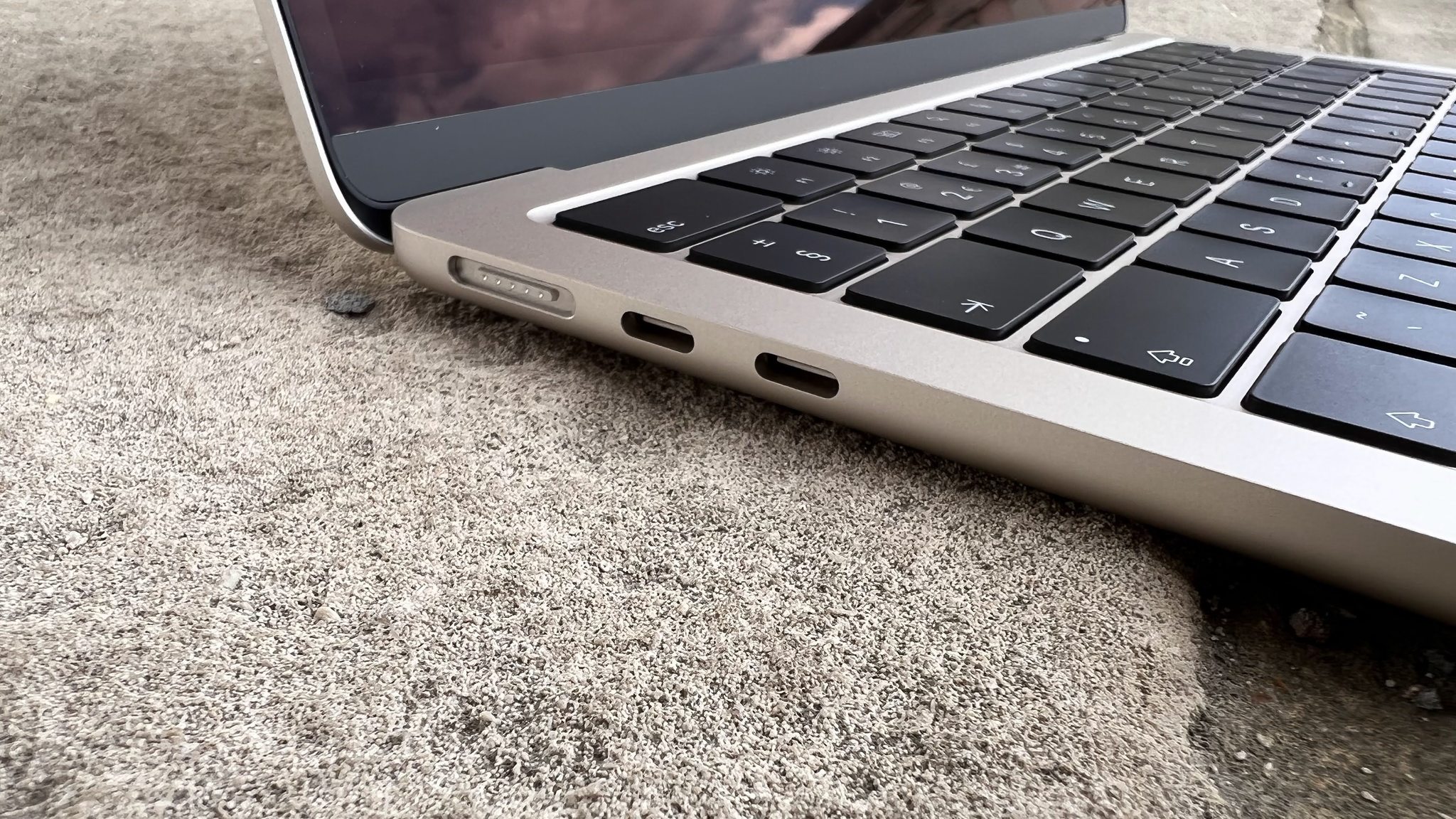
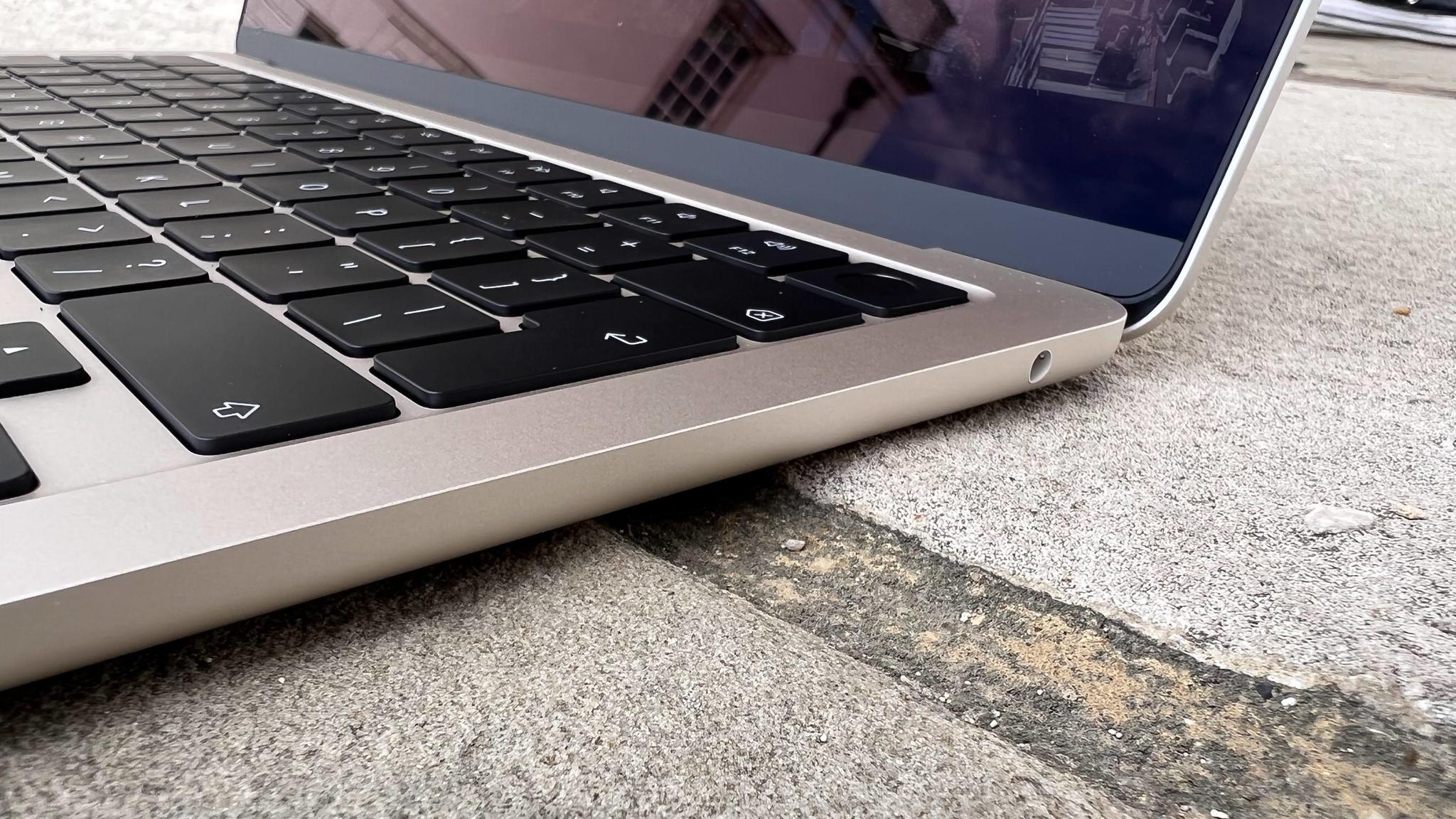


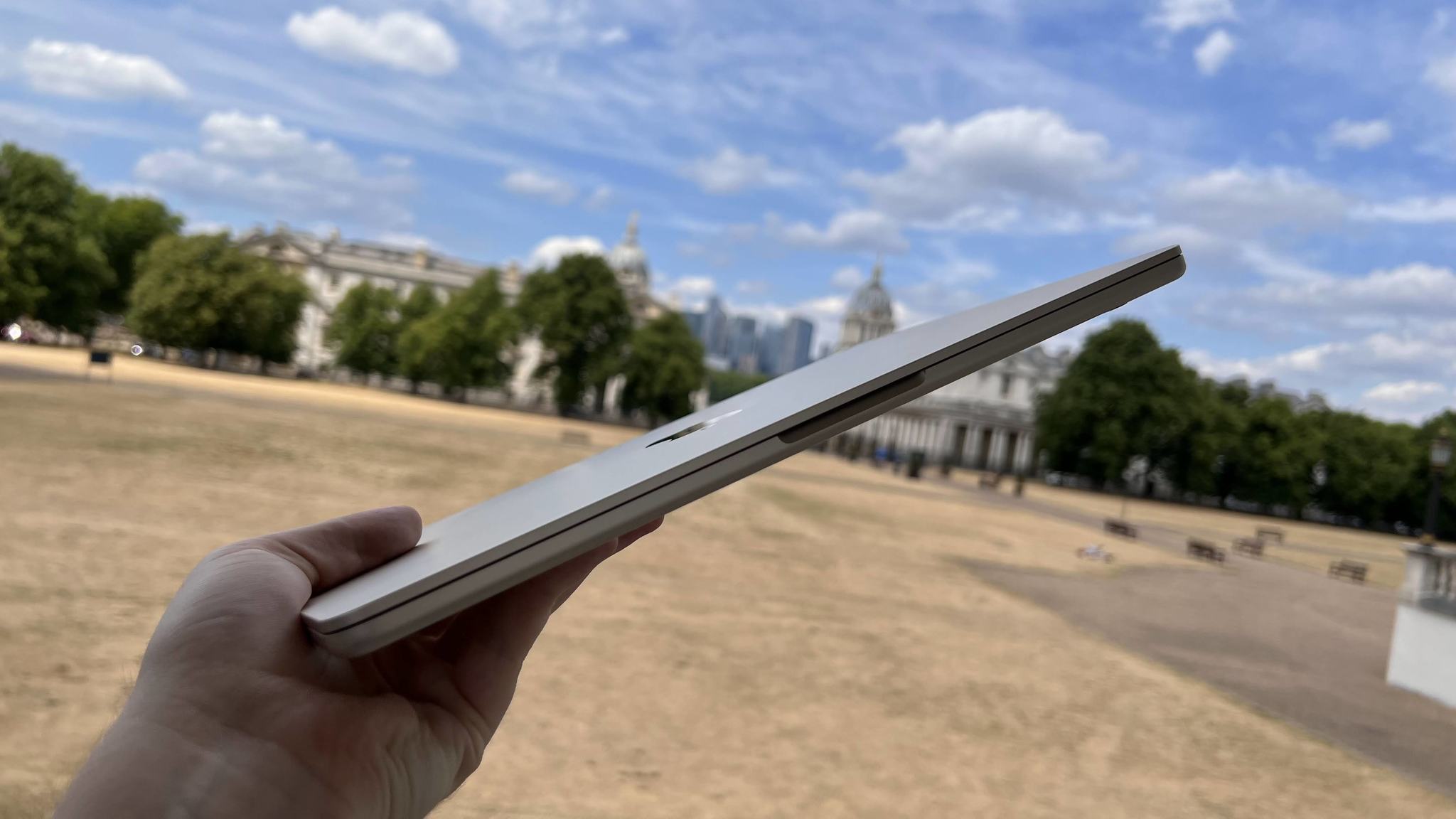
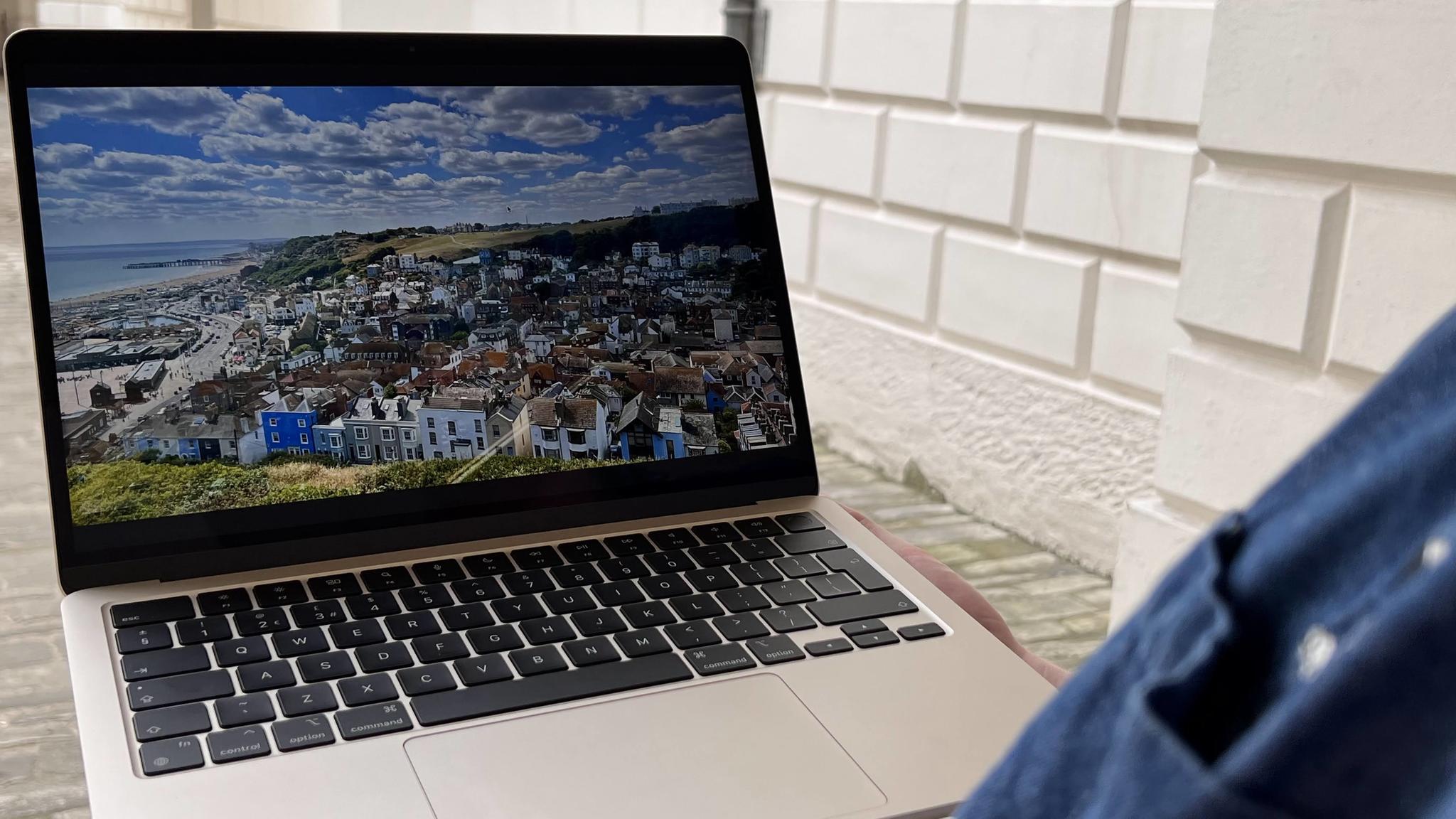
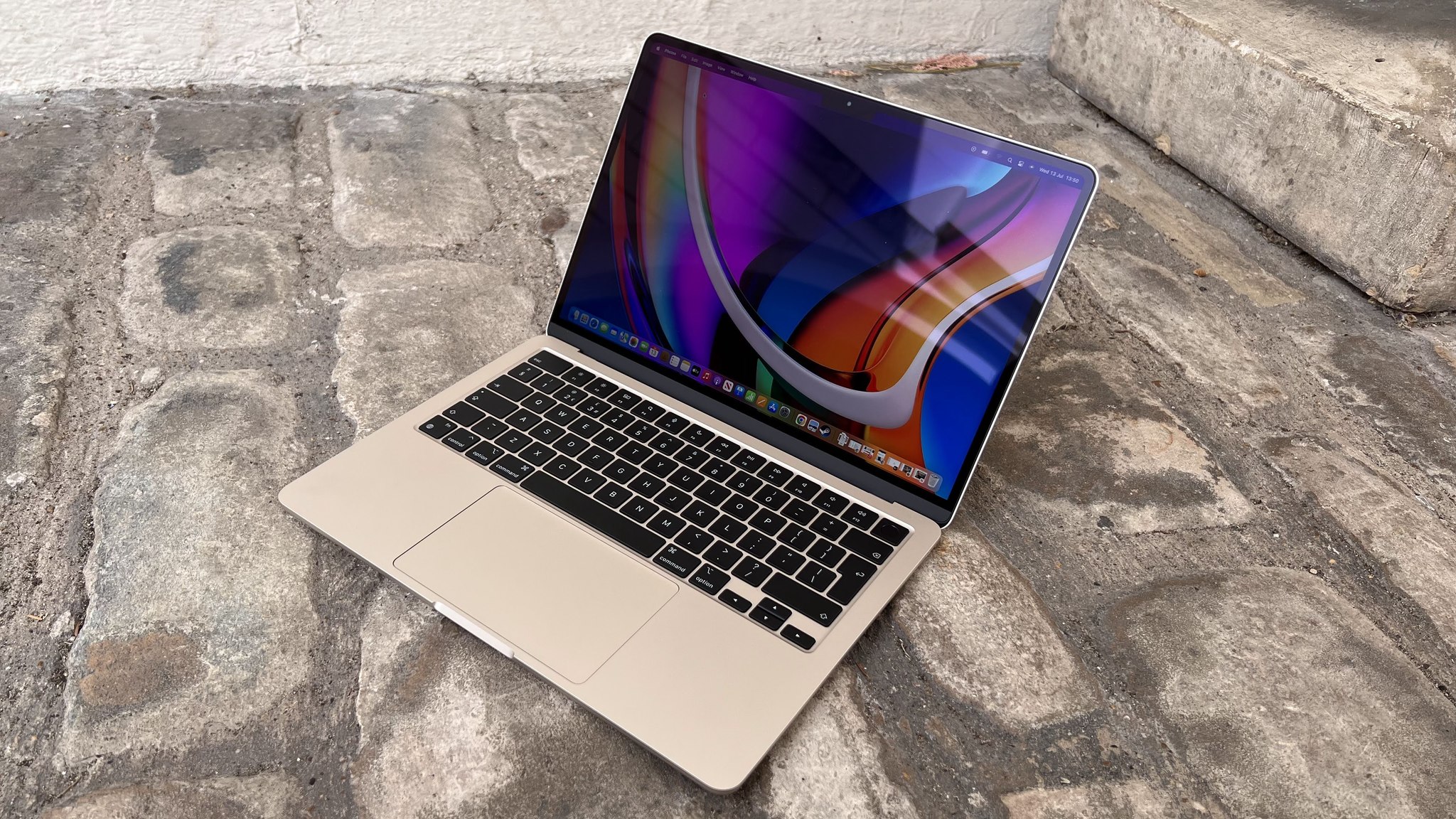
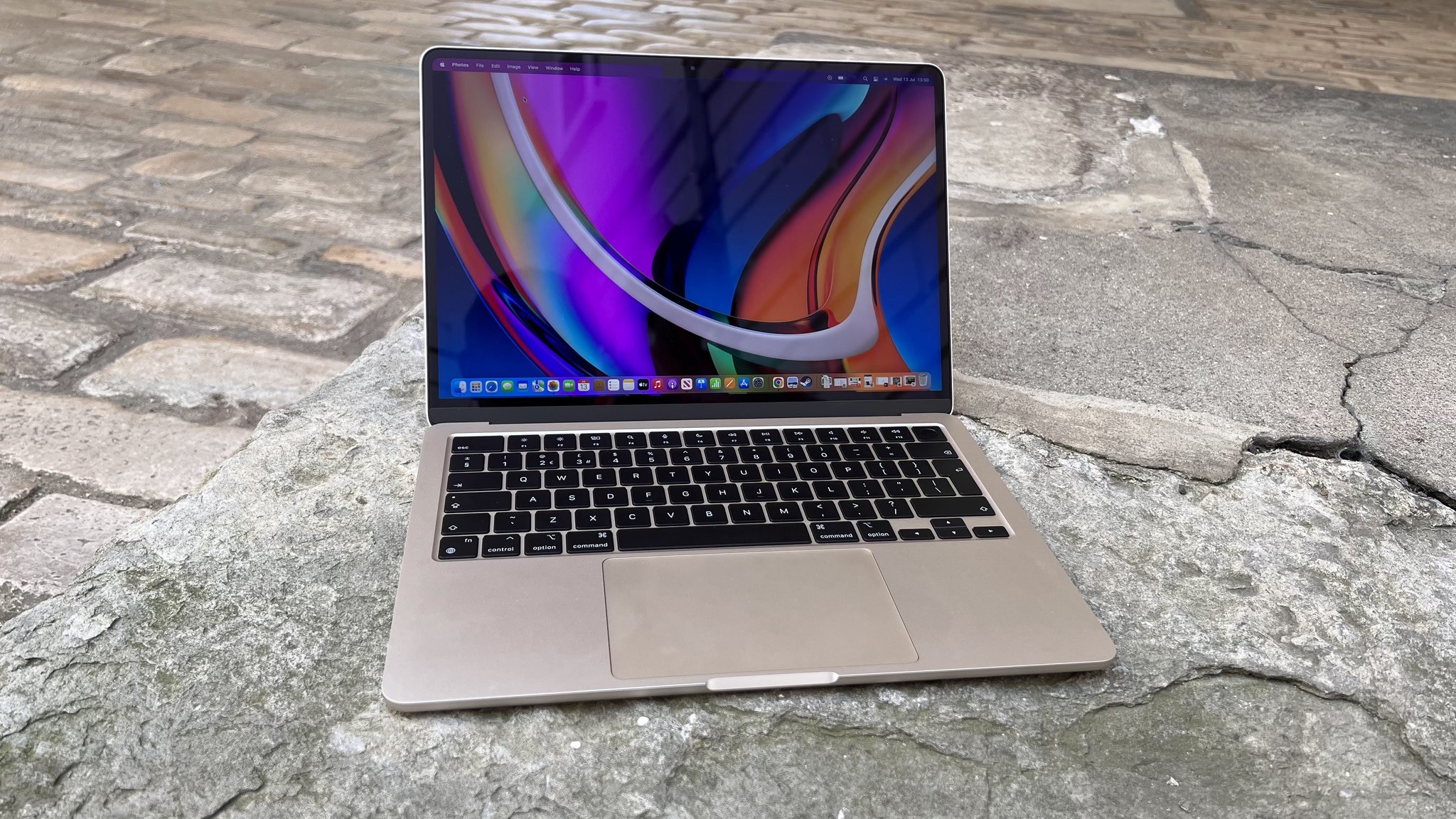
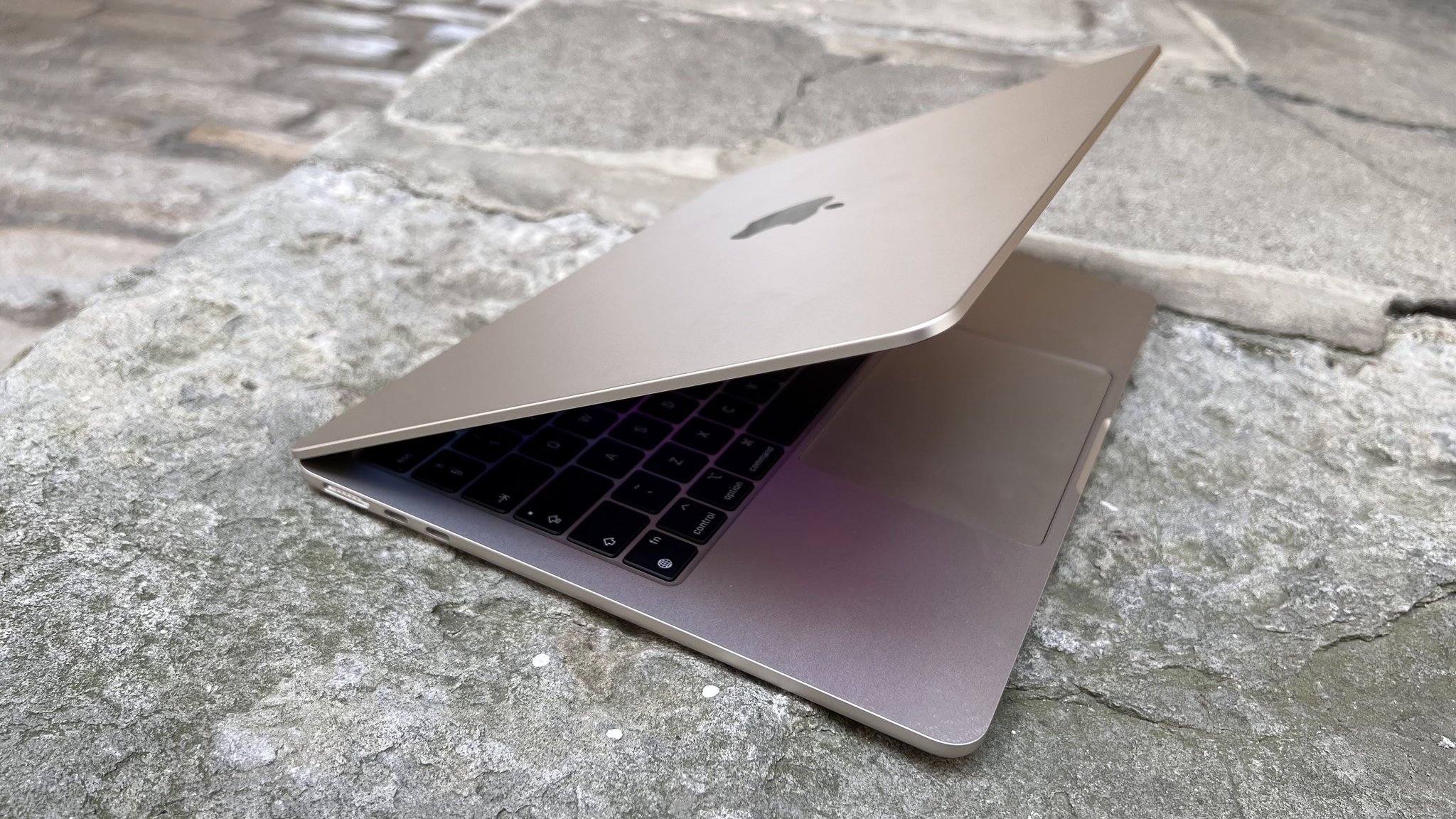

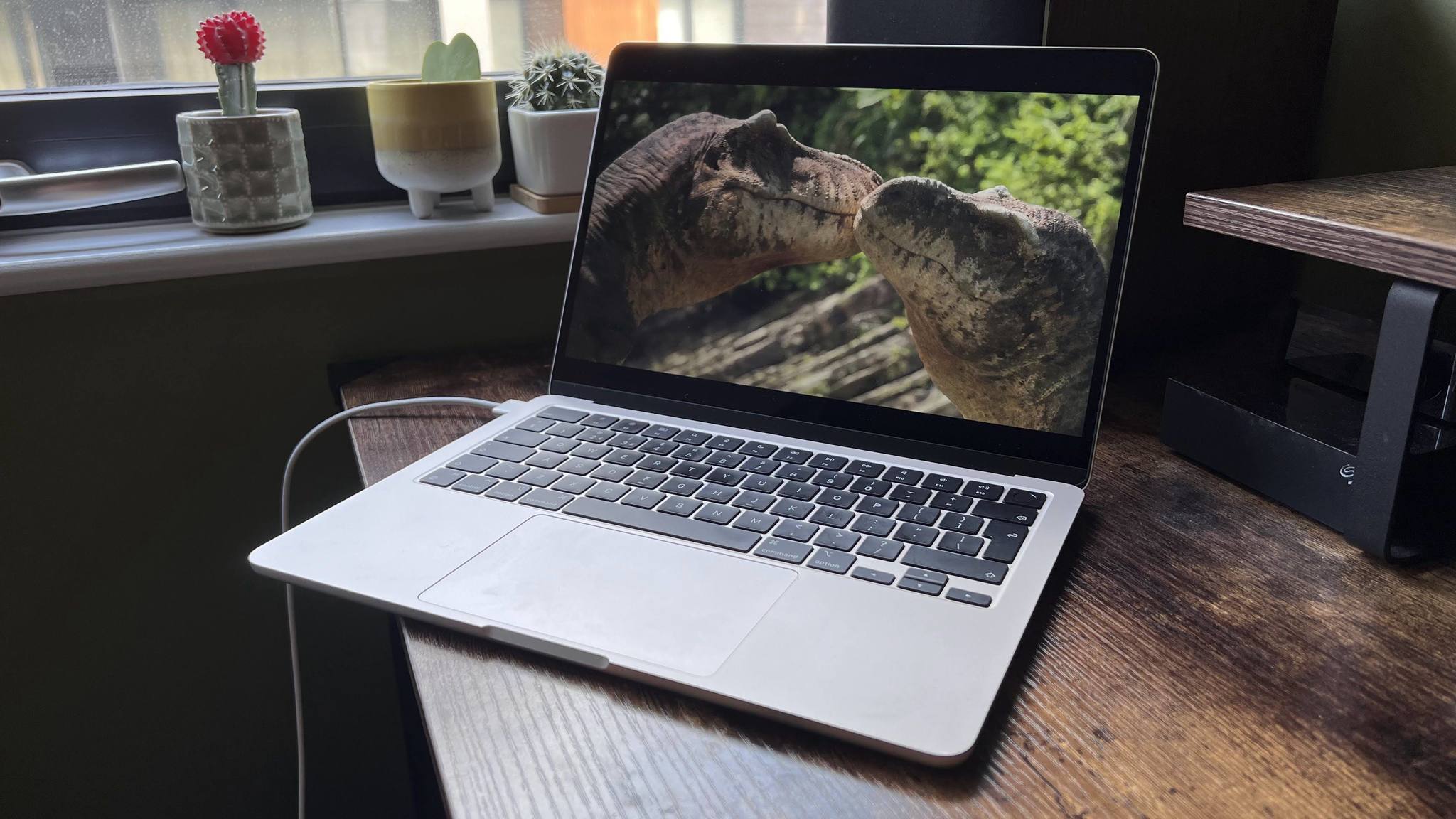

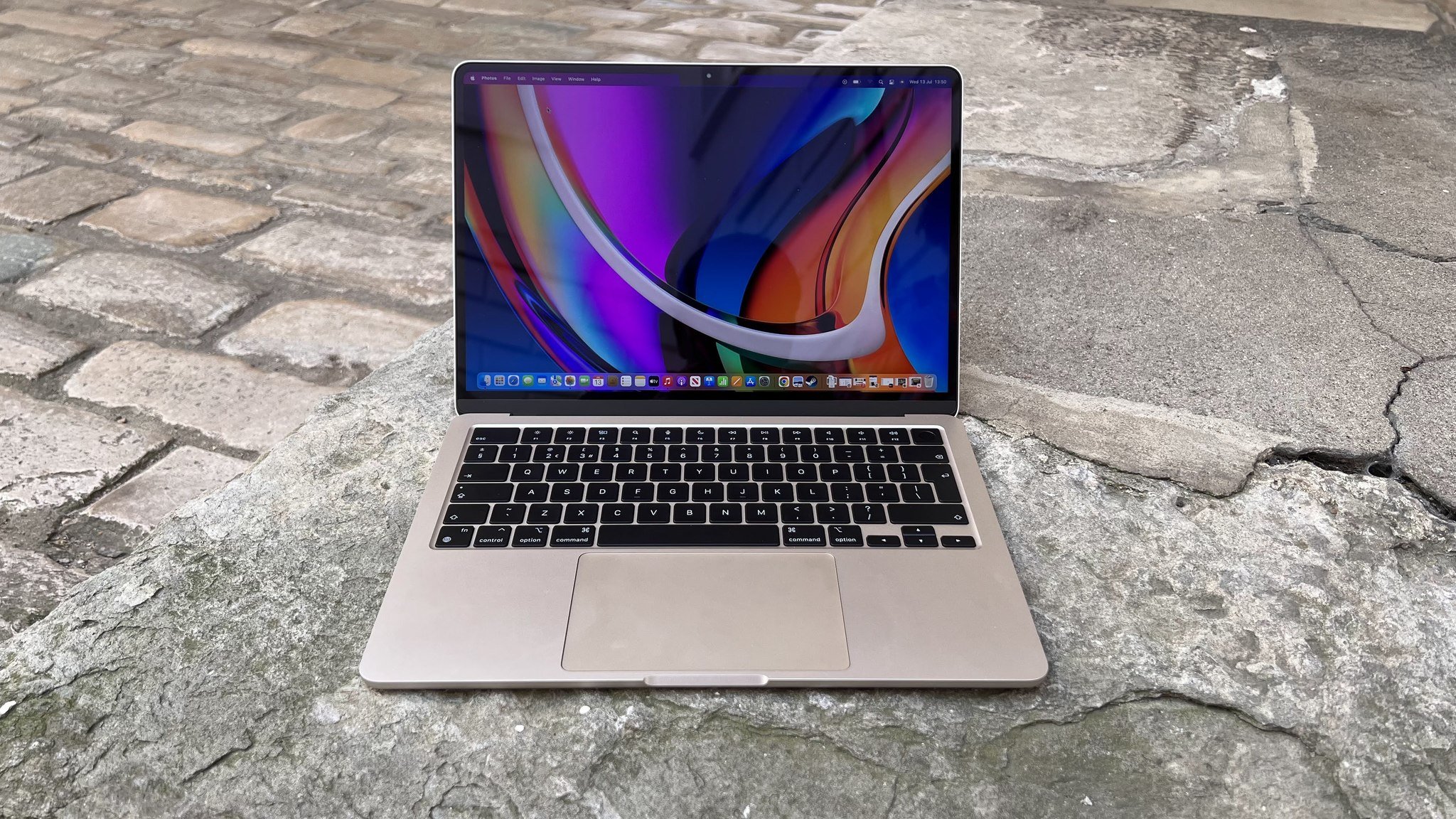

Gerald Lynch is the Editor-in-Chief of iMore, keeping careful watch over the site's editorial output and commercial campaigns, ensuring iMore delivers the in-depth, accurate and timely Apple content its readership deservedly expects. You'll never see him without his iPad Pro, and he loves gaming sessions with his buddies via Apple Arcade on his iPhone 15 Pro, but don't expect him to play with you at home unless your Apple TV is hooked up to a 4K HDR screen and a 7.1 surround system.
Living in London in the UK, Gerald was previously Editor of Gizmodo UK, and Executive Editor of TechRadar, and has covered international trade shows including Apple's WWDC, MWC, CES and IFA. If it has an acronym and an app, he's probably been there, on the front lines reporting on the latest tech innovations. Gerald is also a contributing tech pundit for BBC Radio and has written for various other publications, including T3 magazine, GamesRadar, Space.com, Real Homes, MacFormat, music bible DIY, Tech Digest, TopTenReviews, Mirror.co.uk, Brandish, Kotaku, Shiny Shiny and Lifehacker. Gerald is also the author of 'Get Technology: Upgrade Your Future', published by Aurum Press, and also holds a Guinness world record on Tetris. For real.
